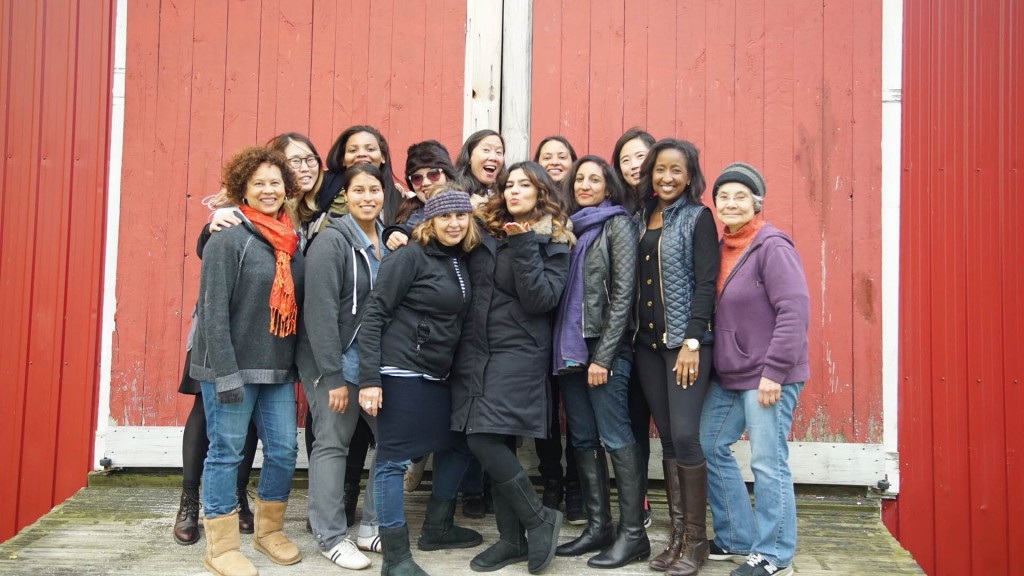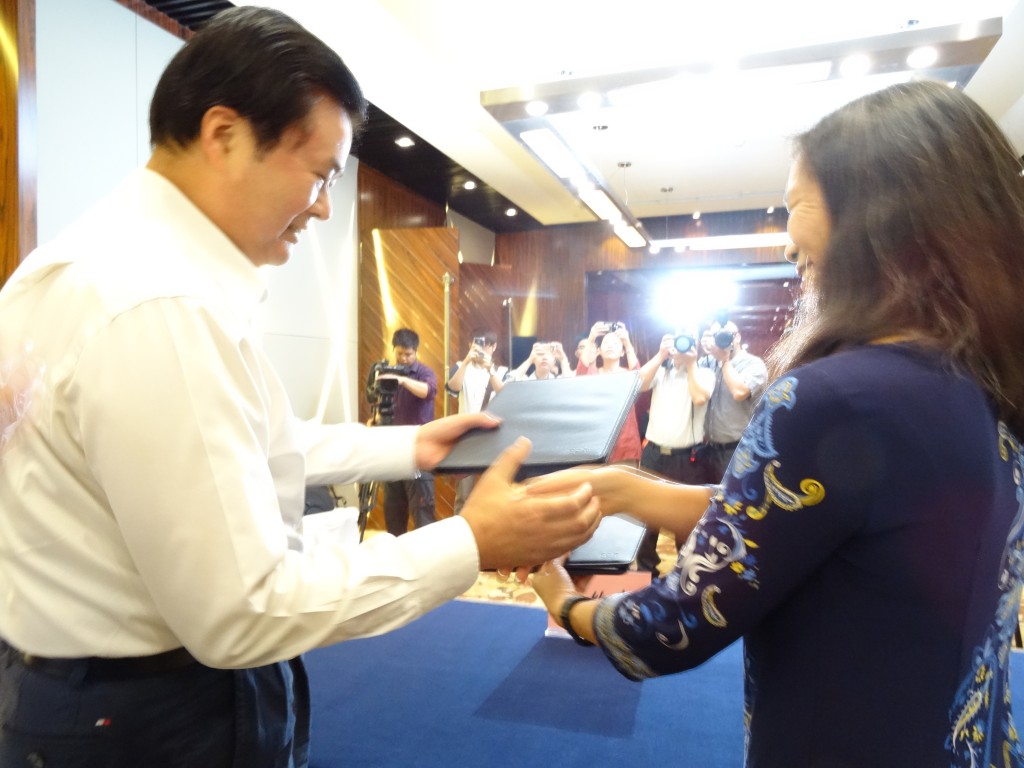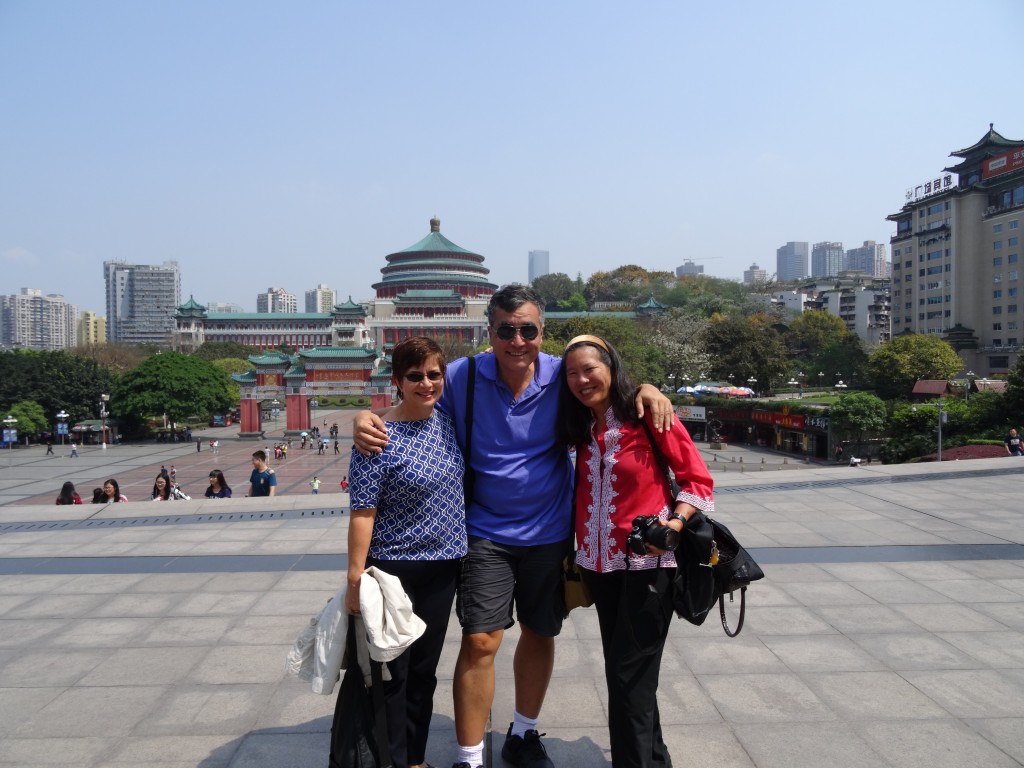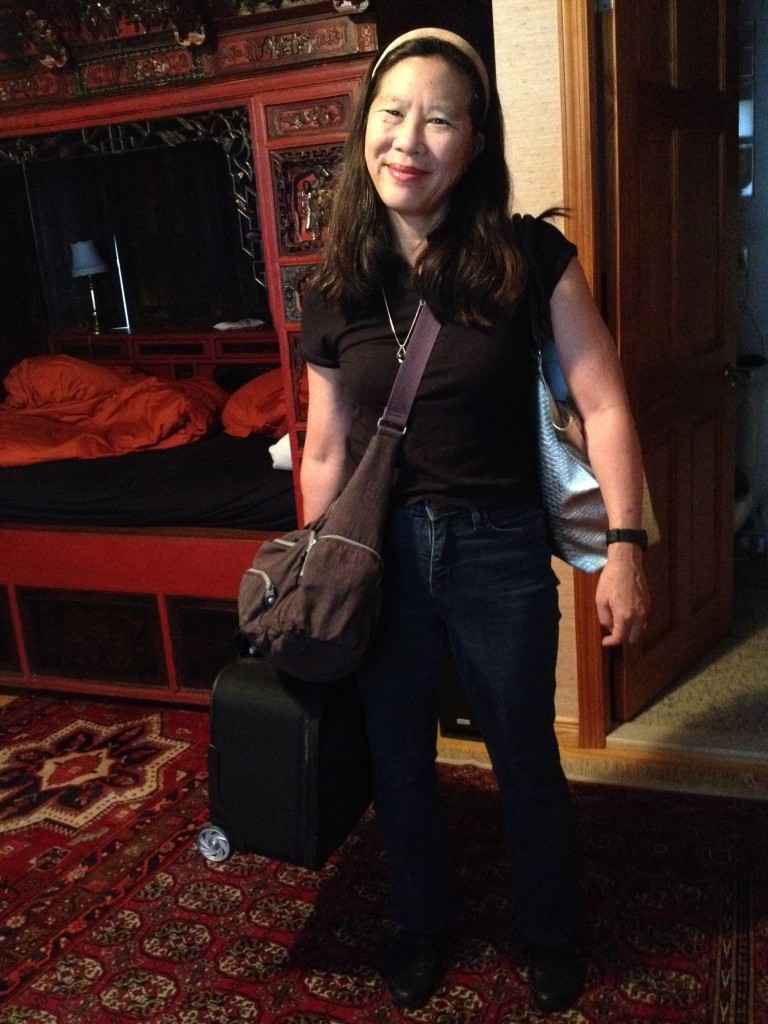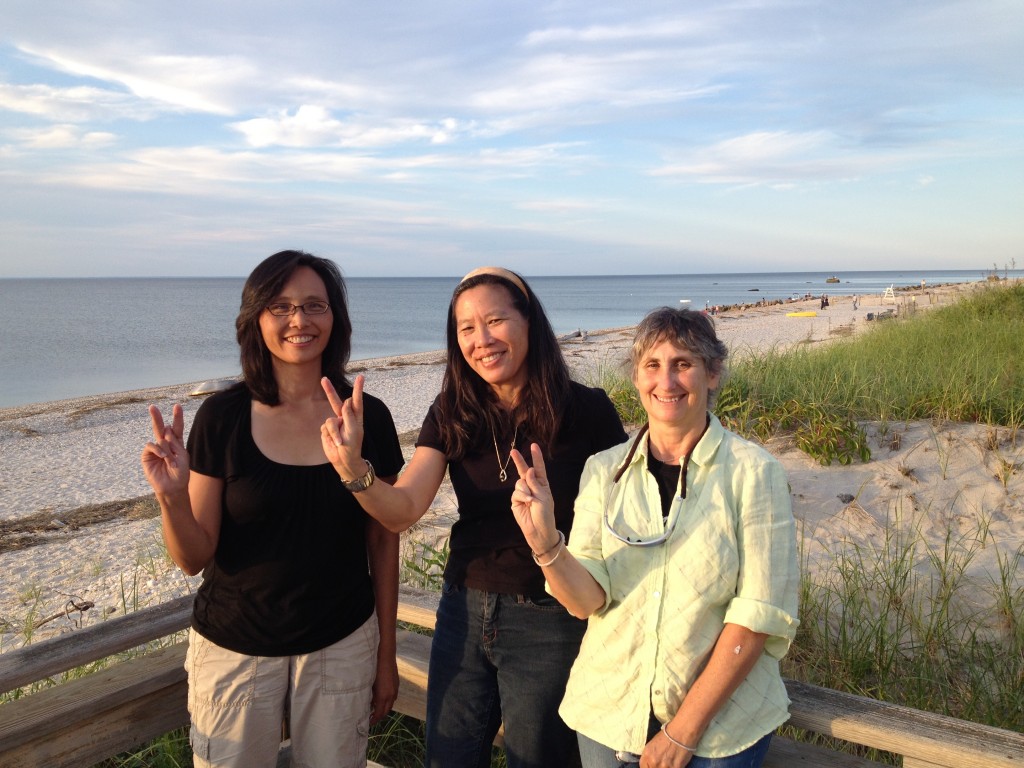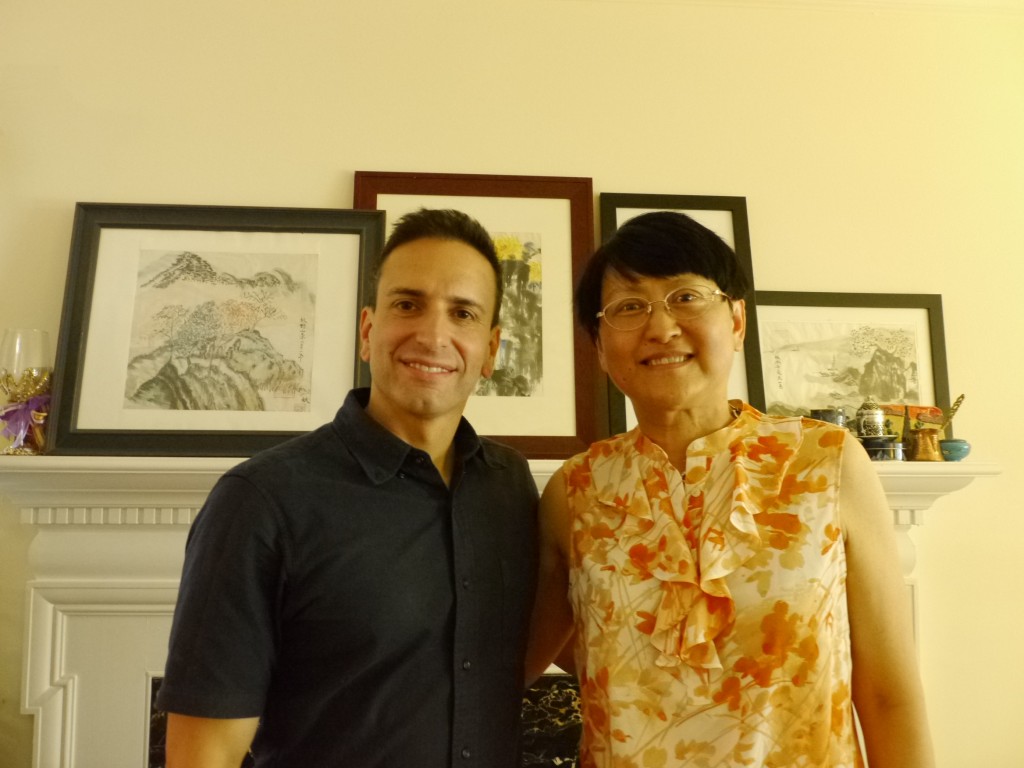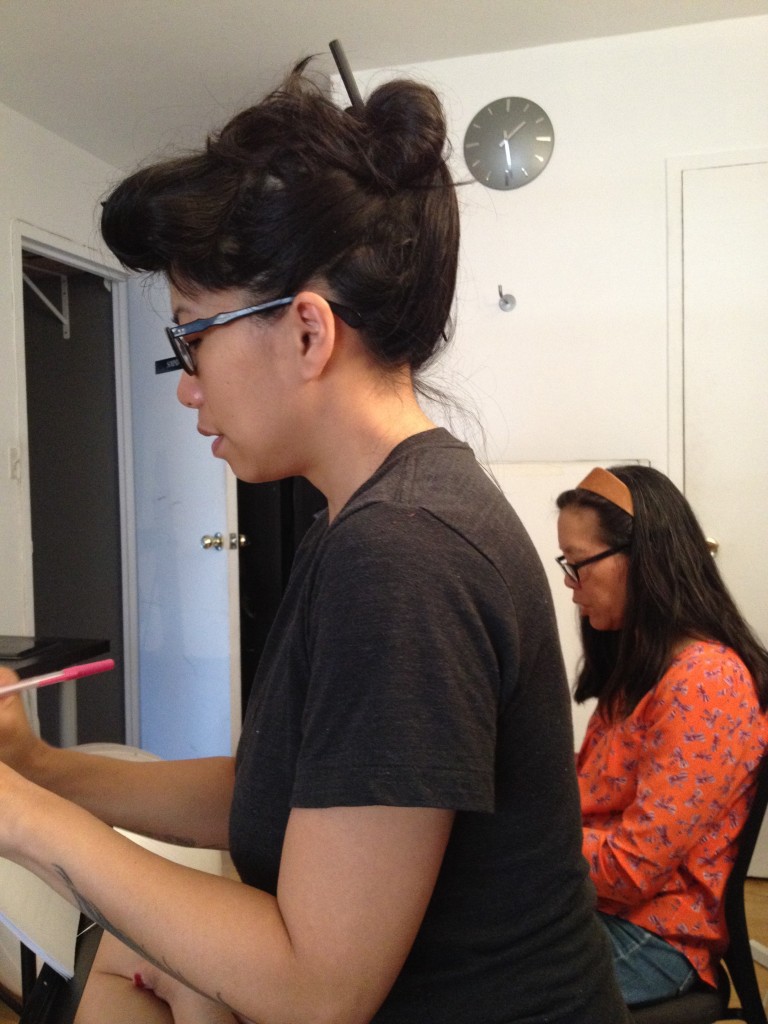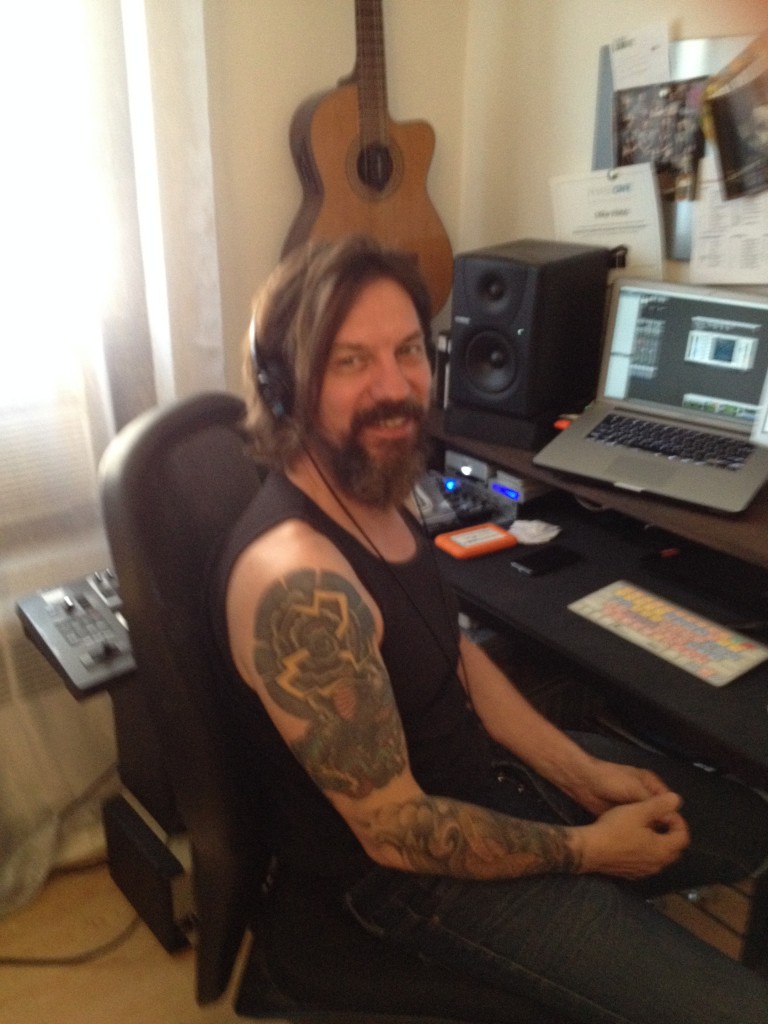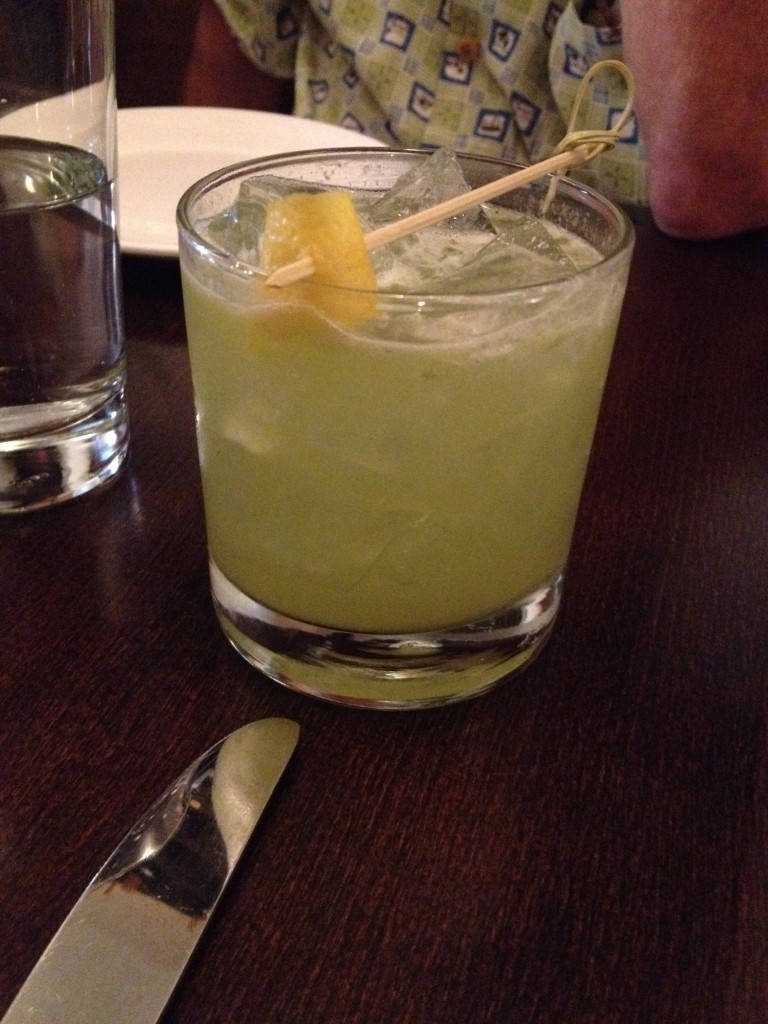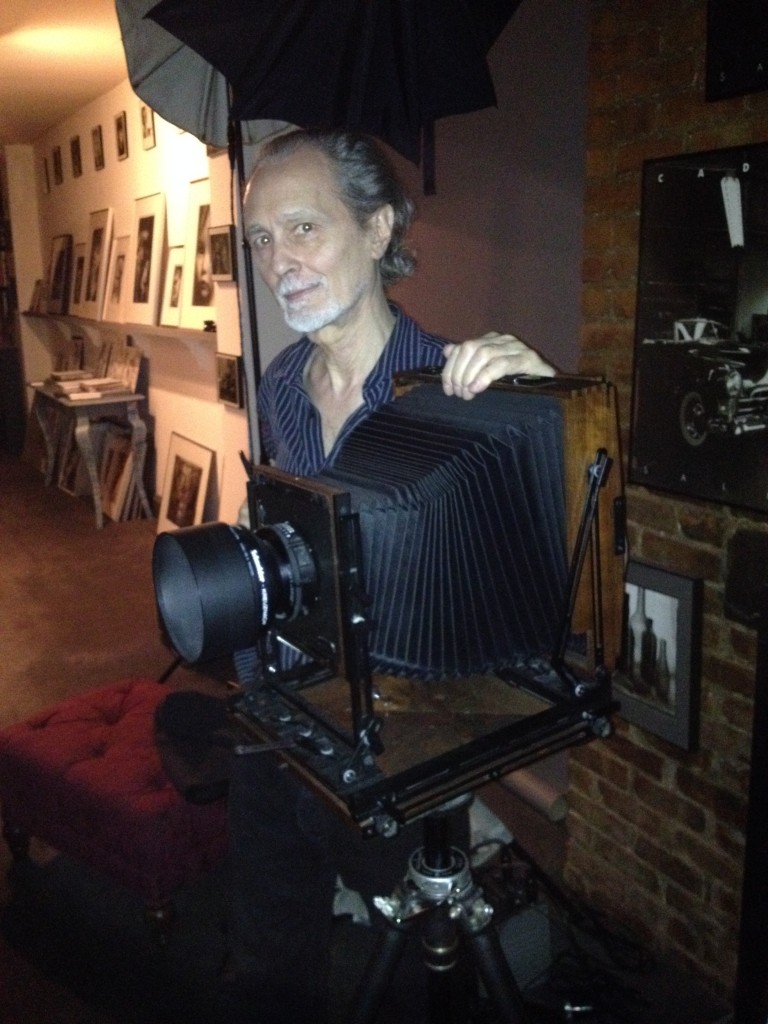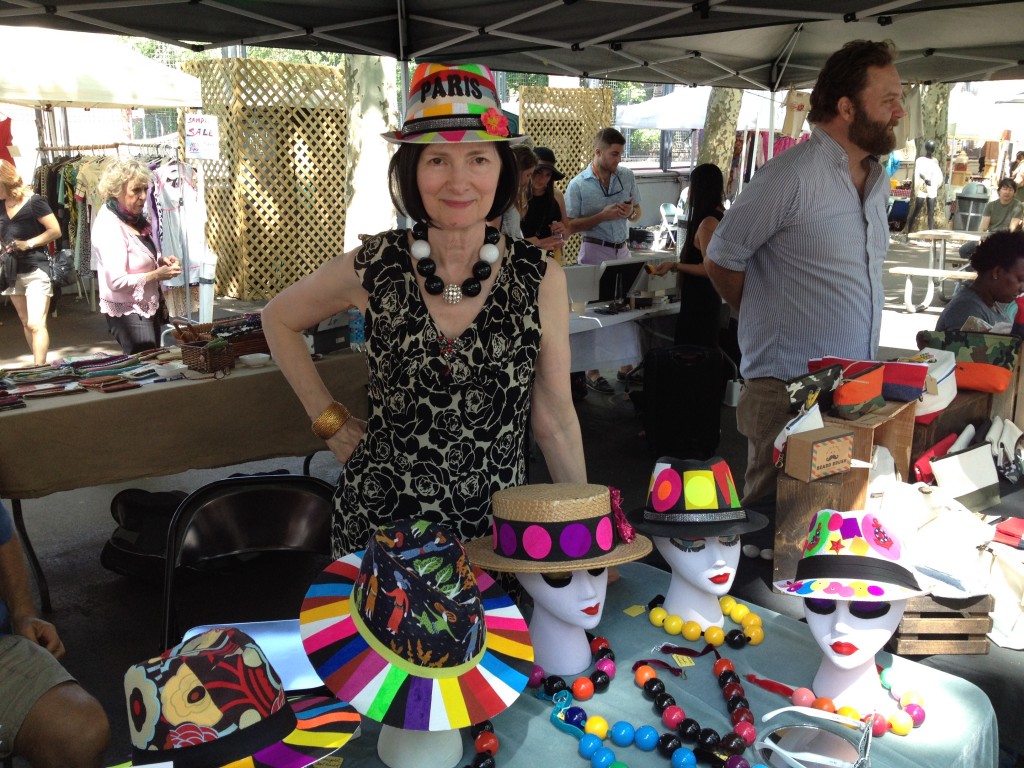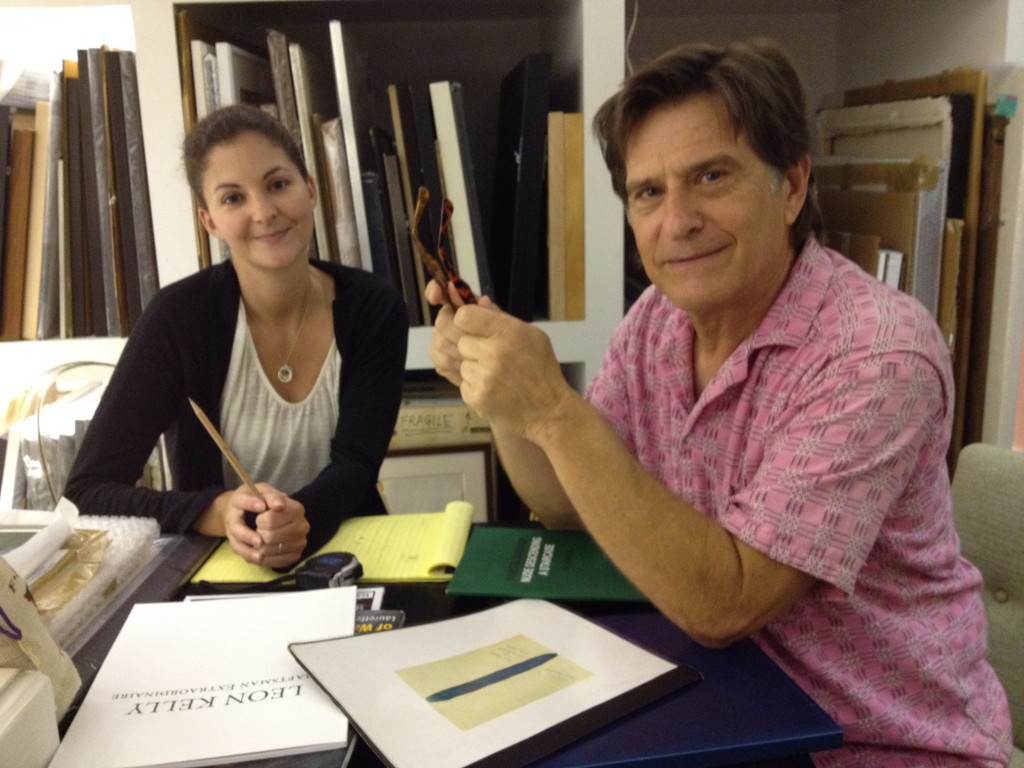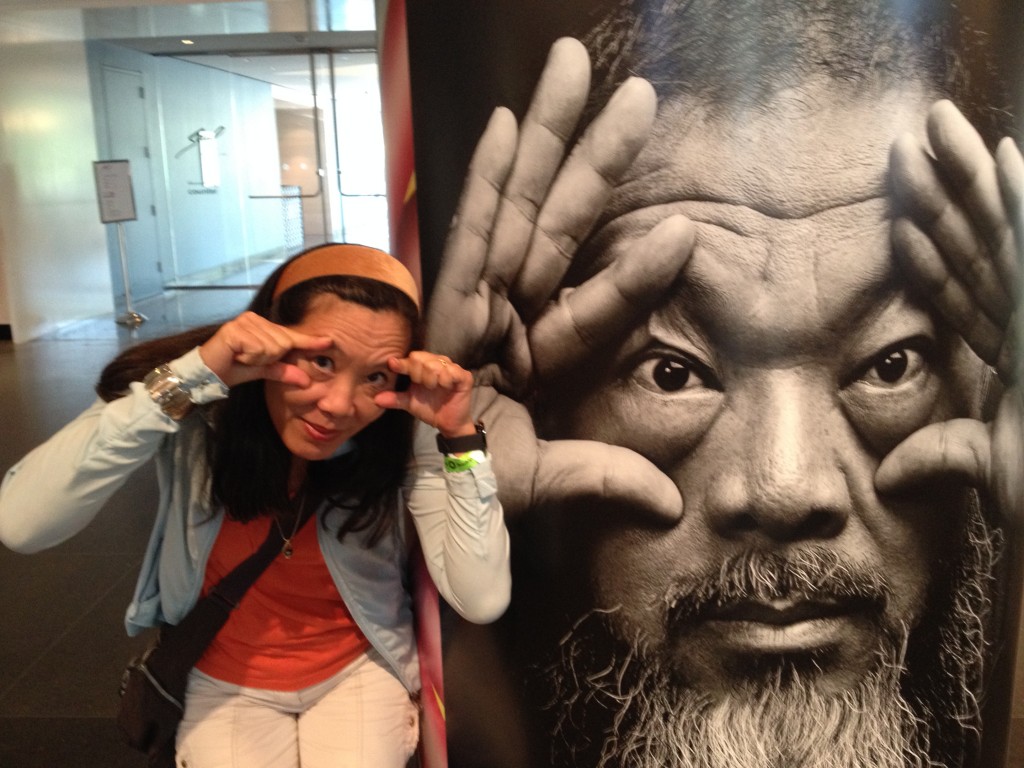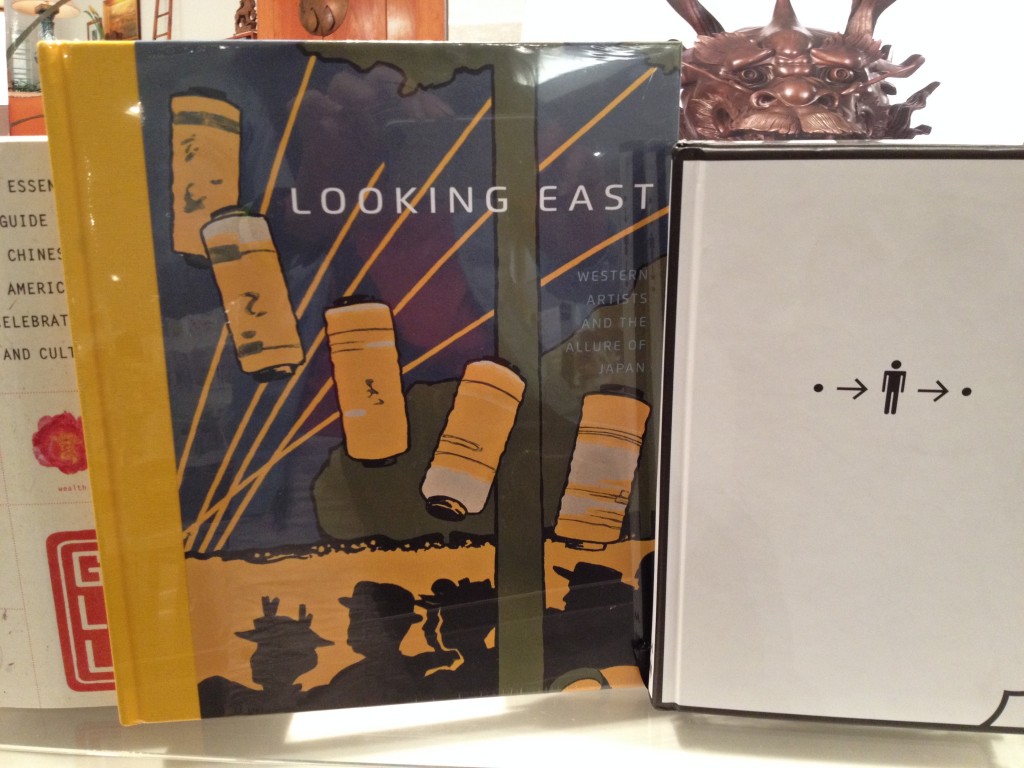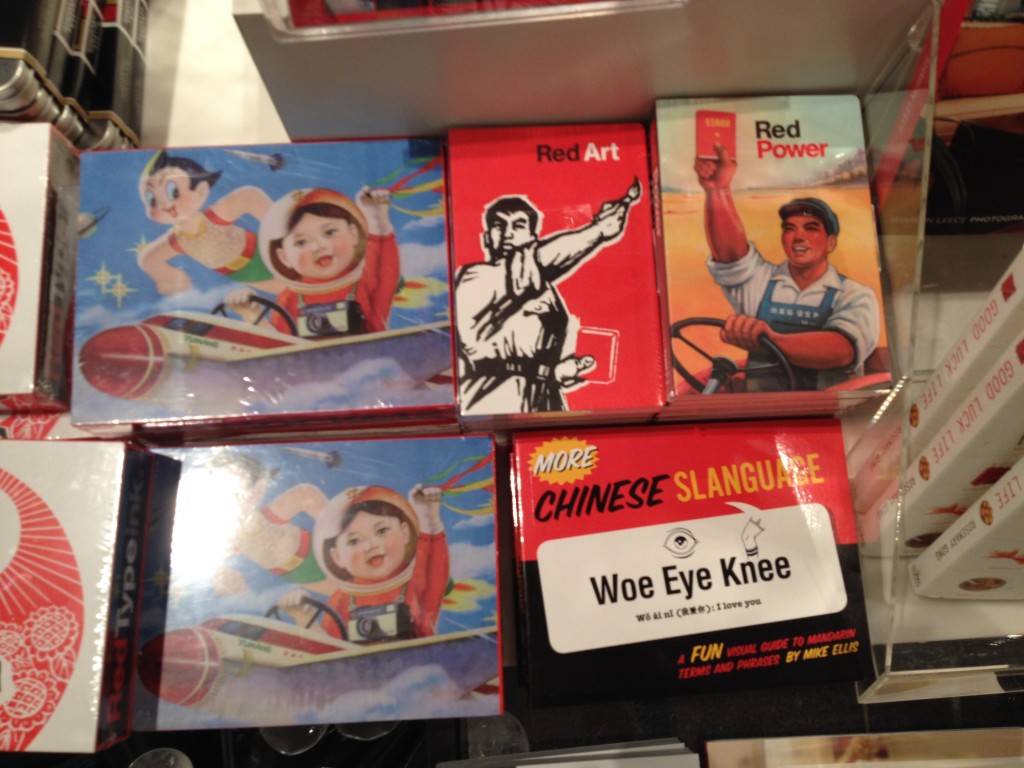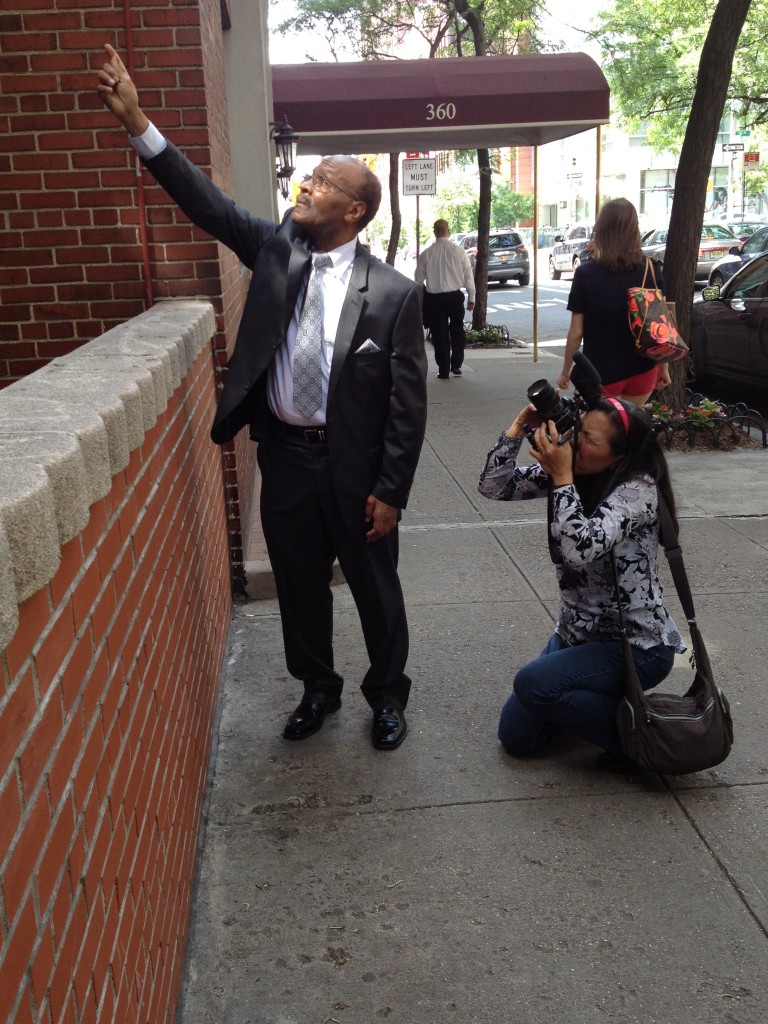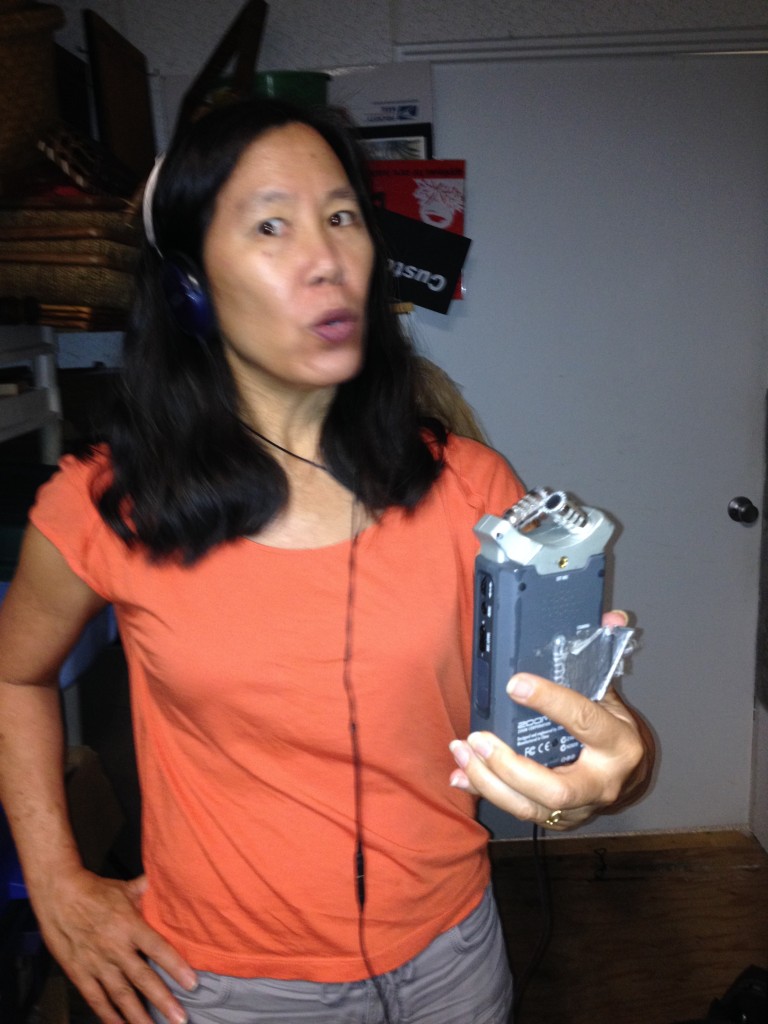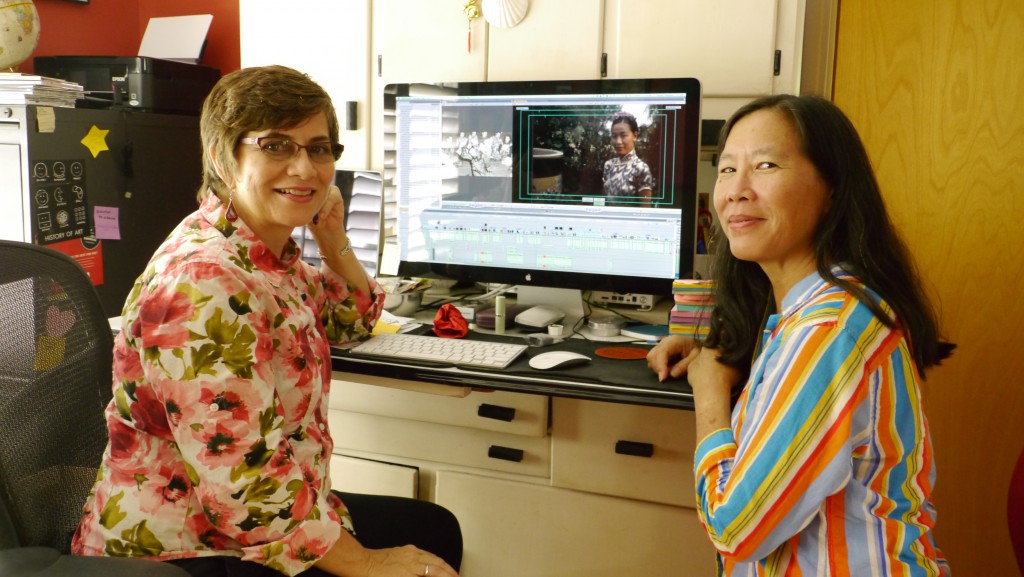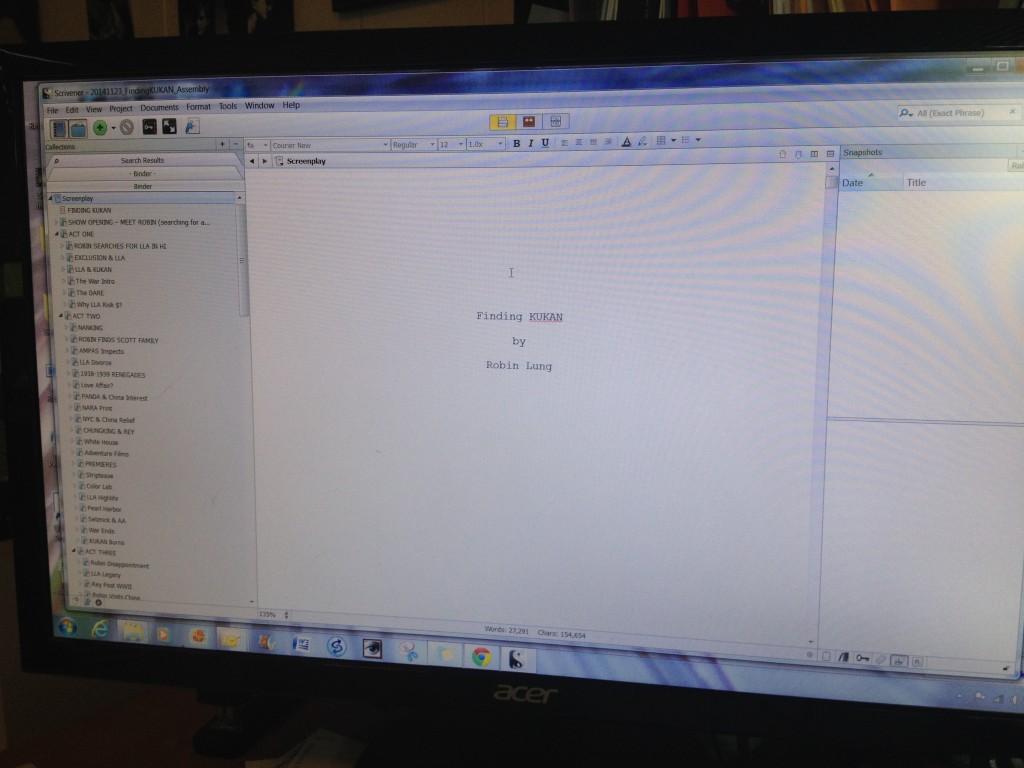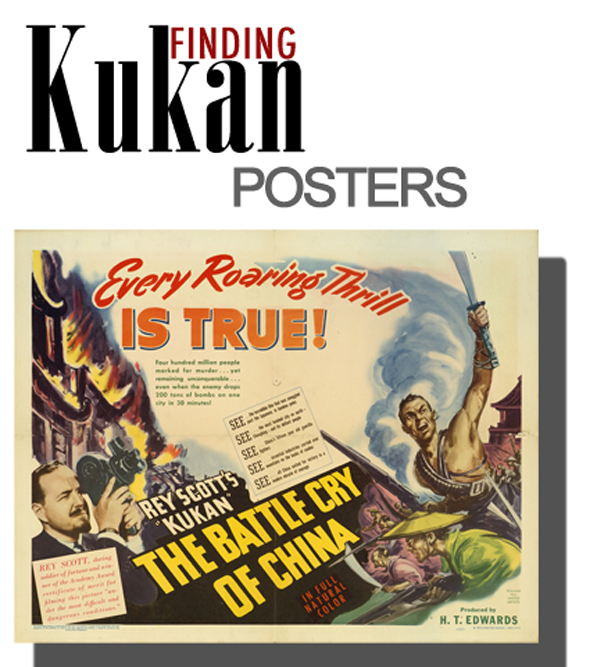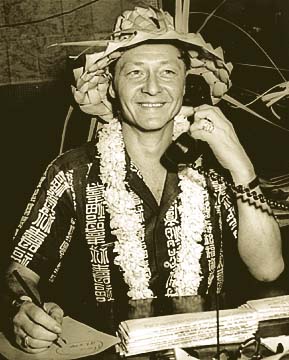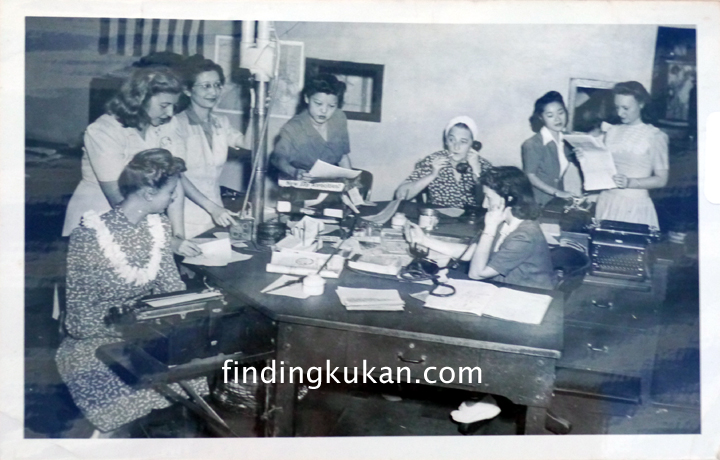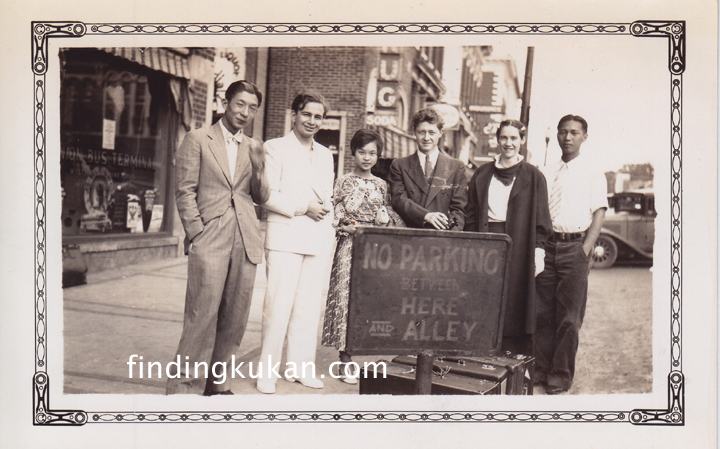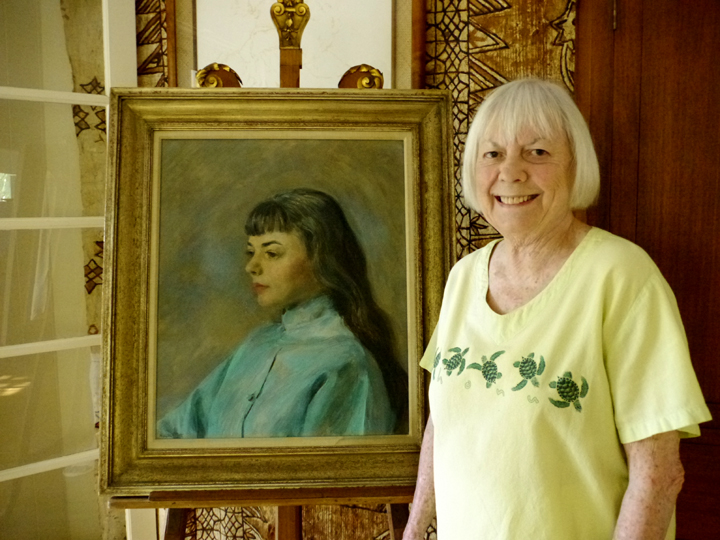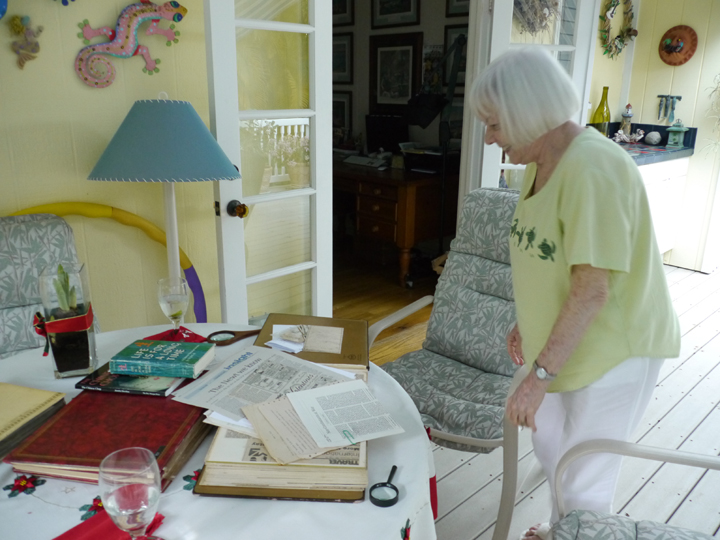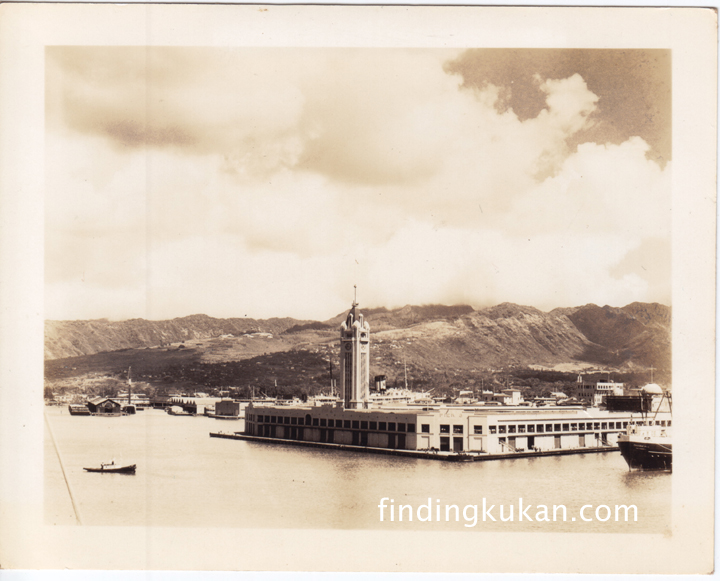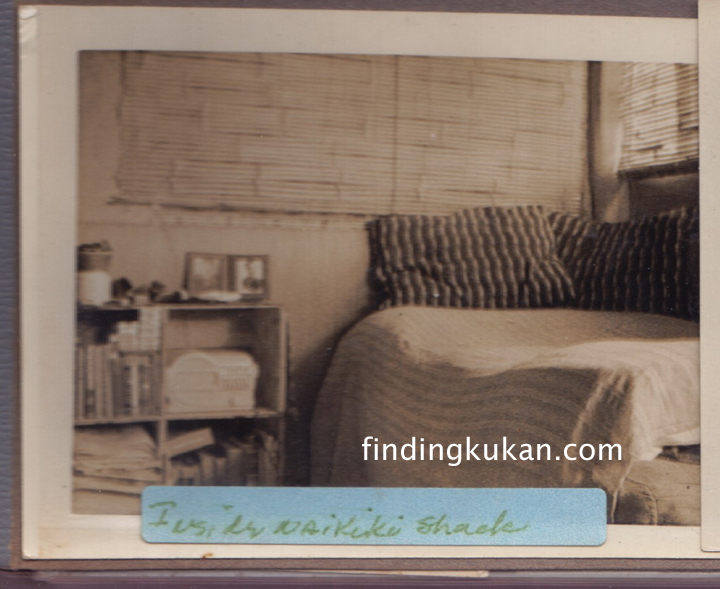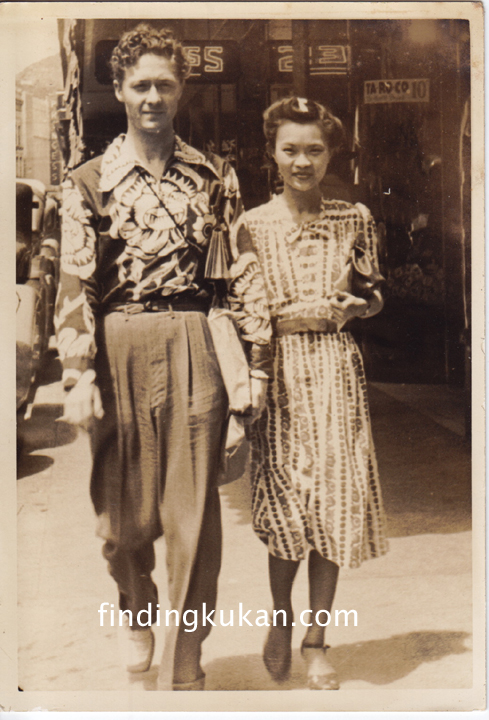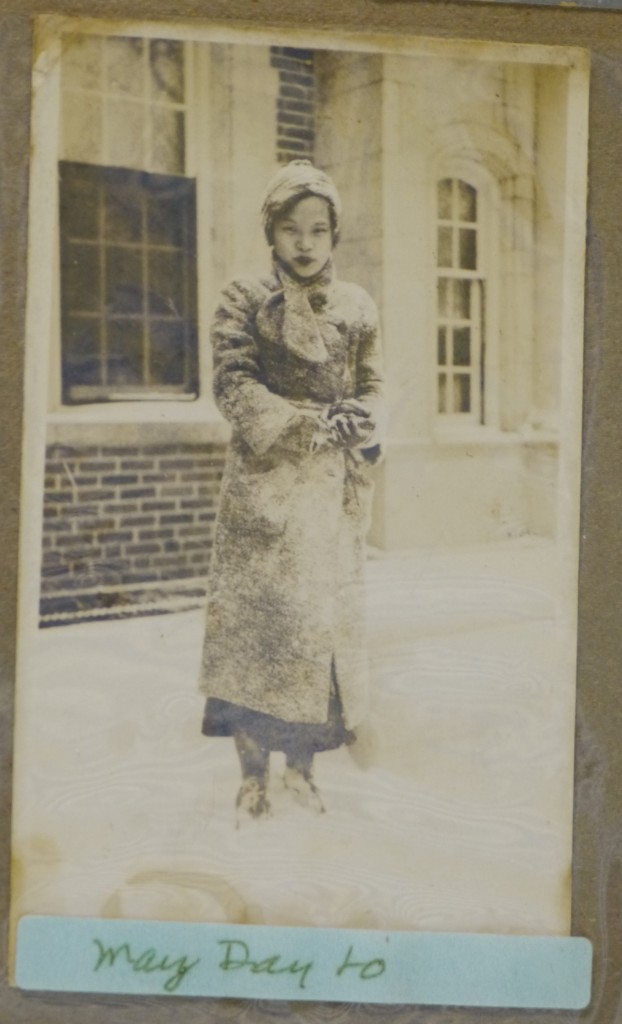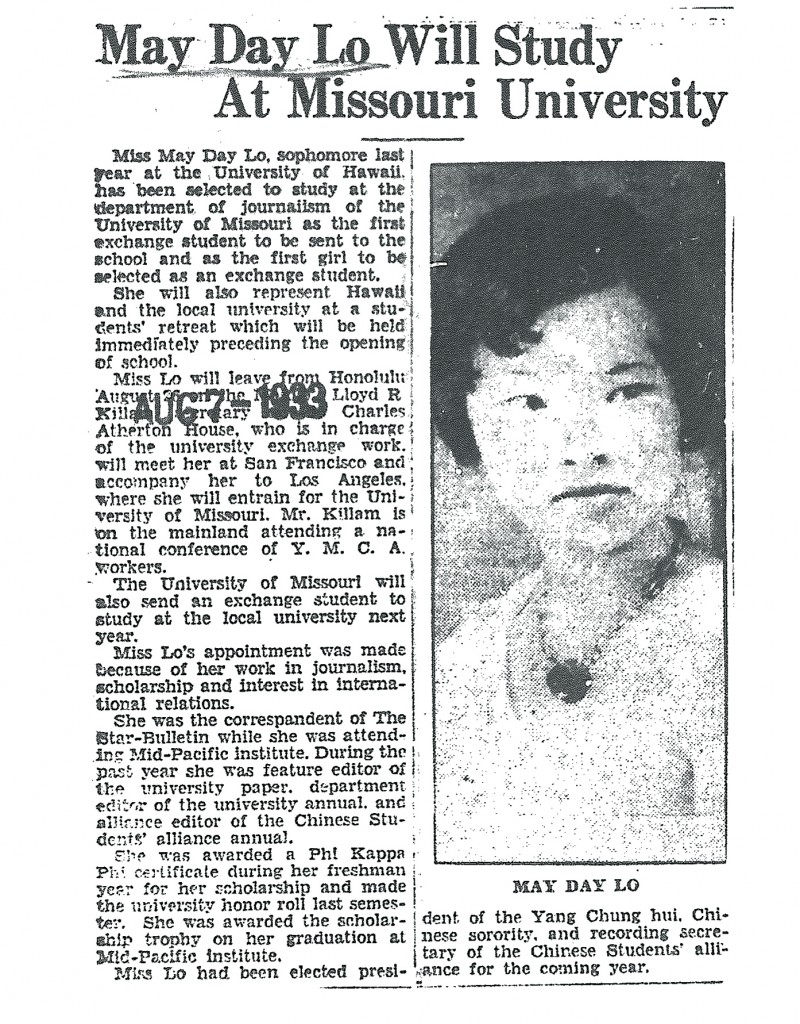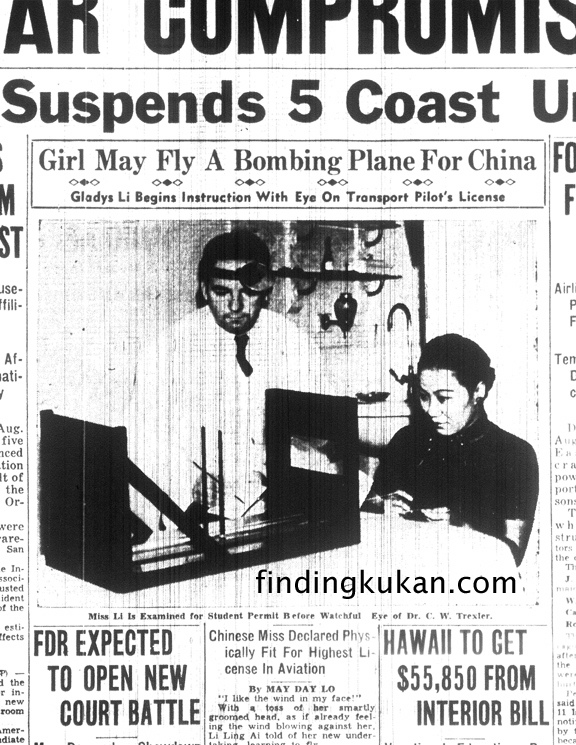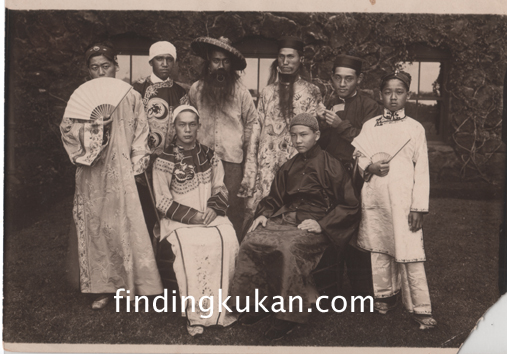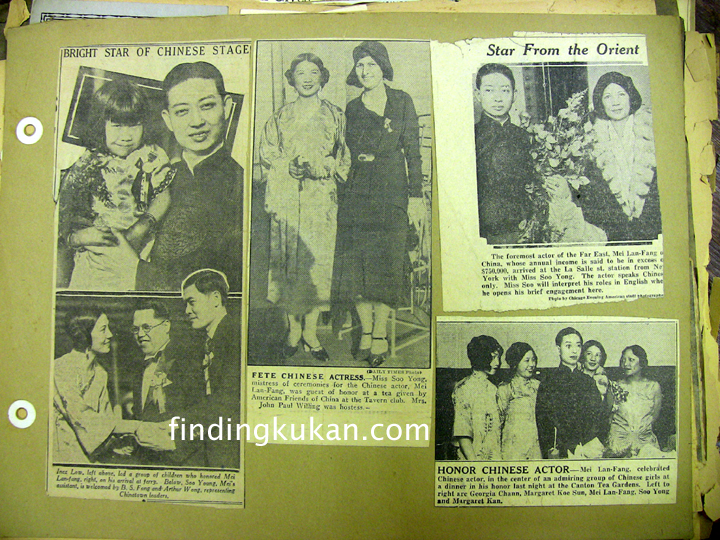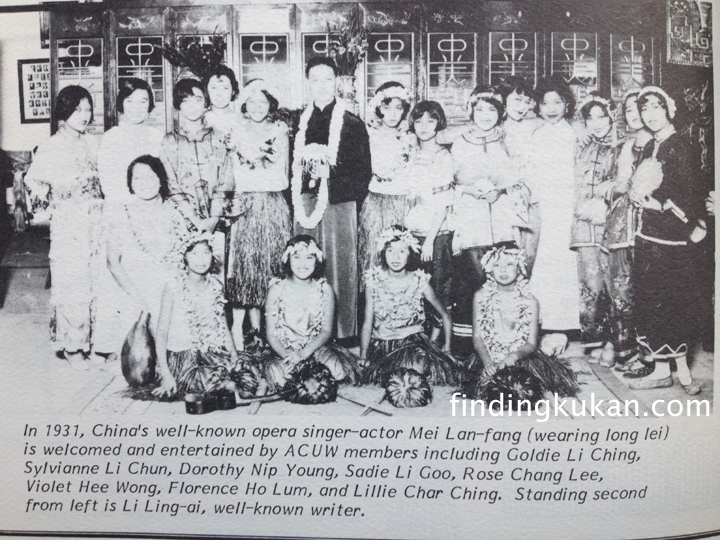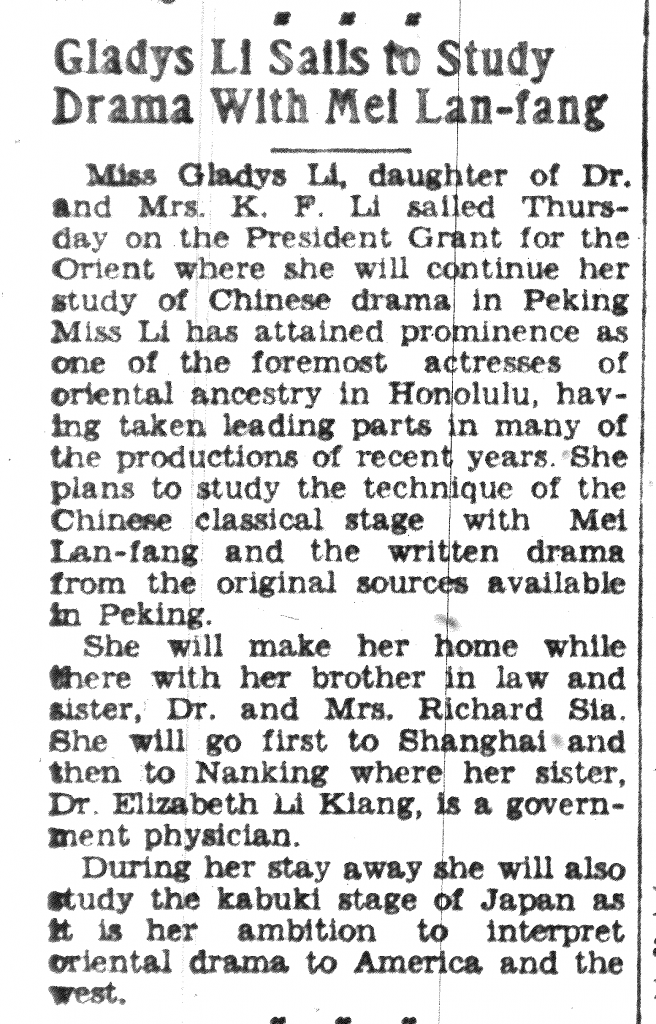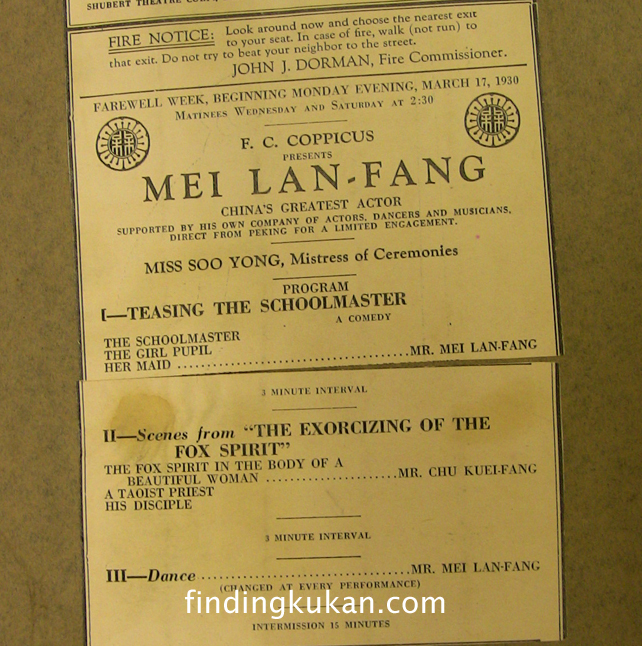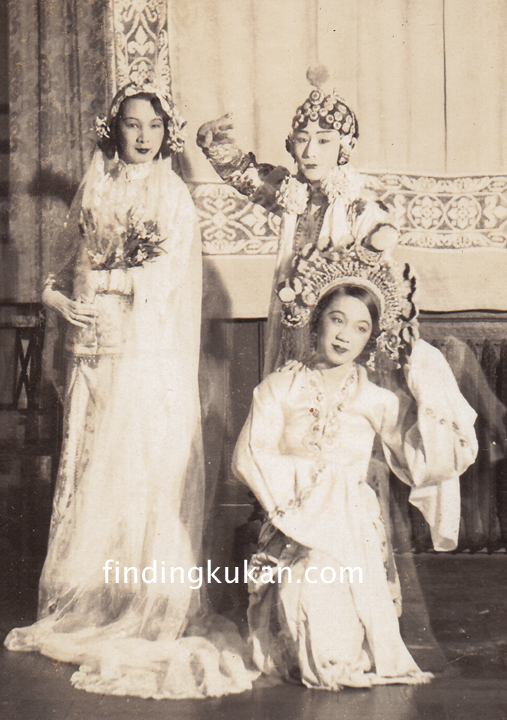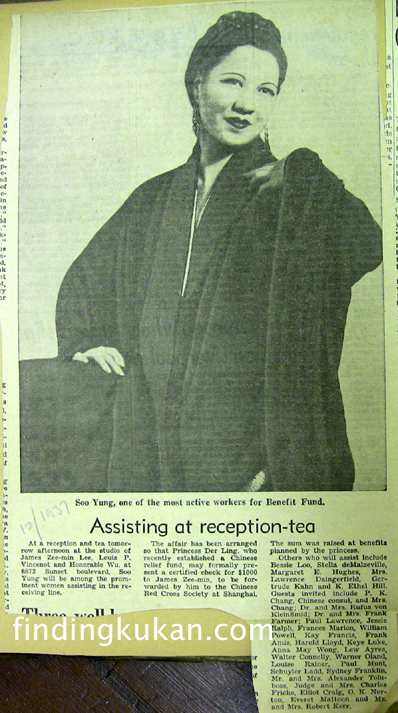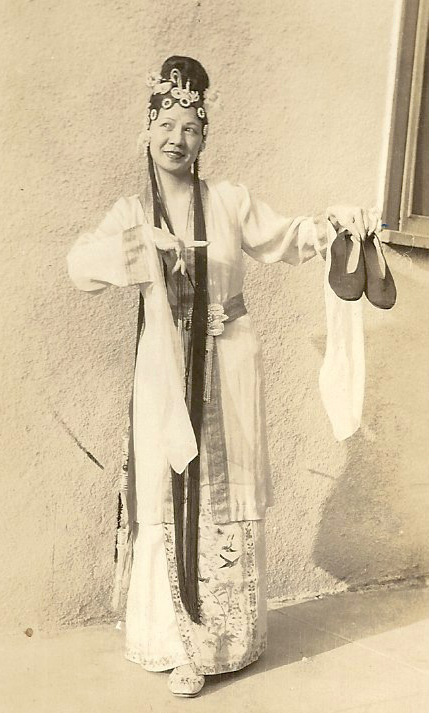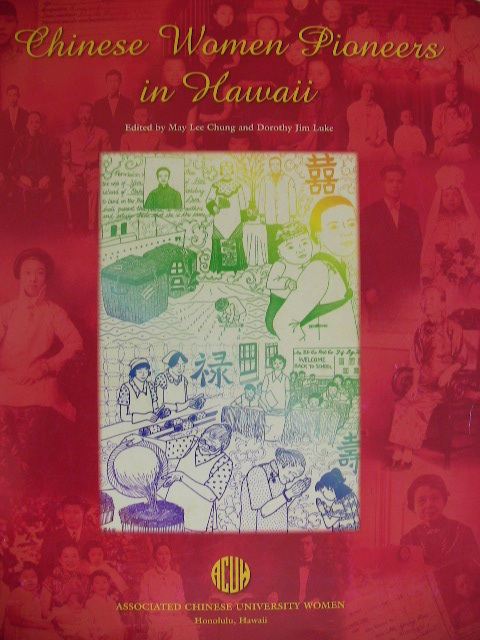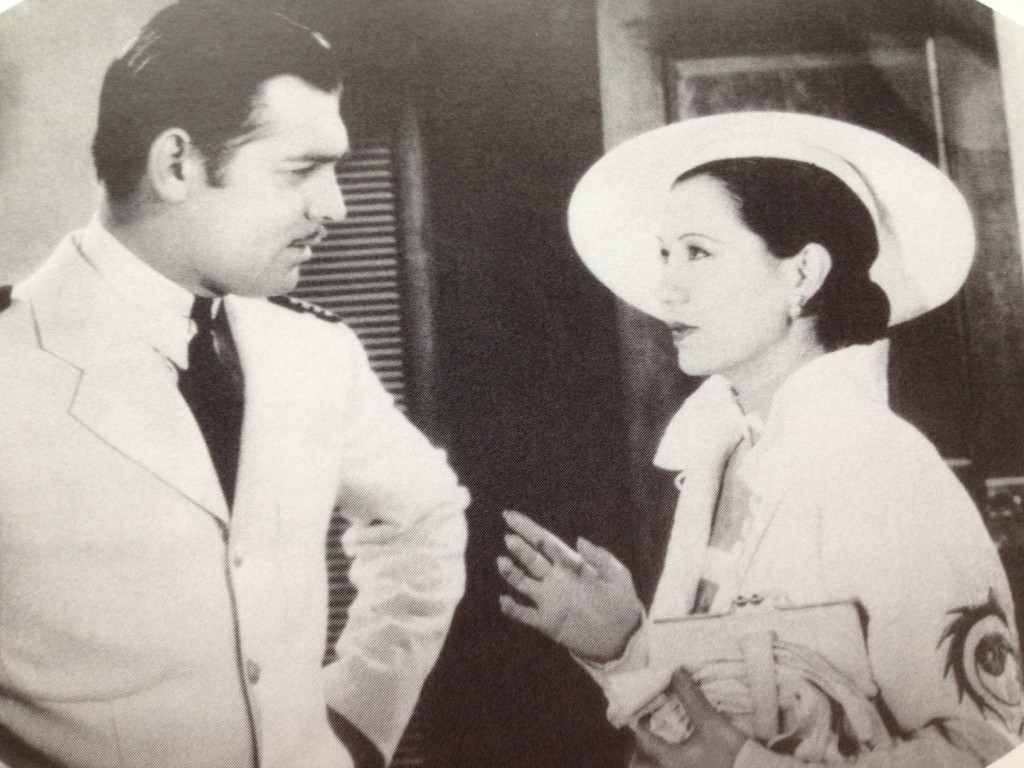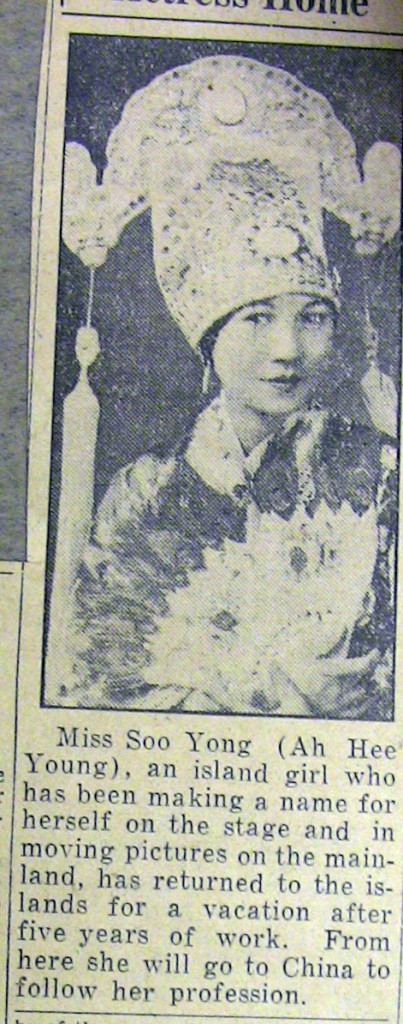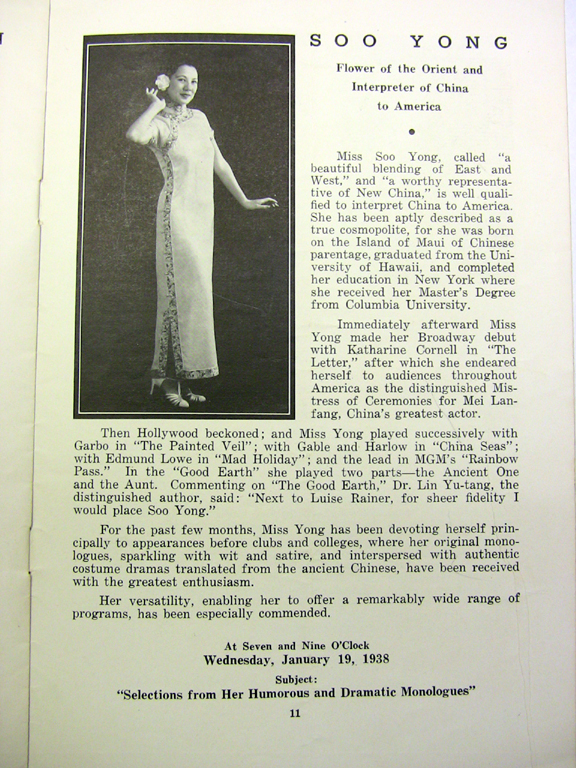After four months, I’m still trying to digest all the new experiences and things I learned on my first trip to China in July – a study tour focused on World War II history. Currently the average high school world history class in the United States spends less than 15 minutes a year teaching about World War II in Asia. Back in my day, it was even less than that. So this trip was a real eye-opener even though I’d been studying up on the subject for the past few years. A fellowship from the New Jersey chapter of The Alliance for Learning and Preserving the History of World War II in Asia (ALPHA) and a generous donation from Douglas Ho and the Beatrice M.H. Young Foundation made my whole trip possible. I’m grateful to them and all my traveling companions who enhanced my experience.
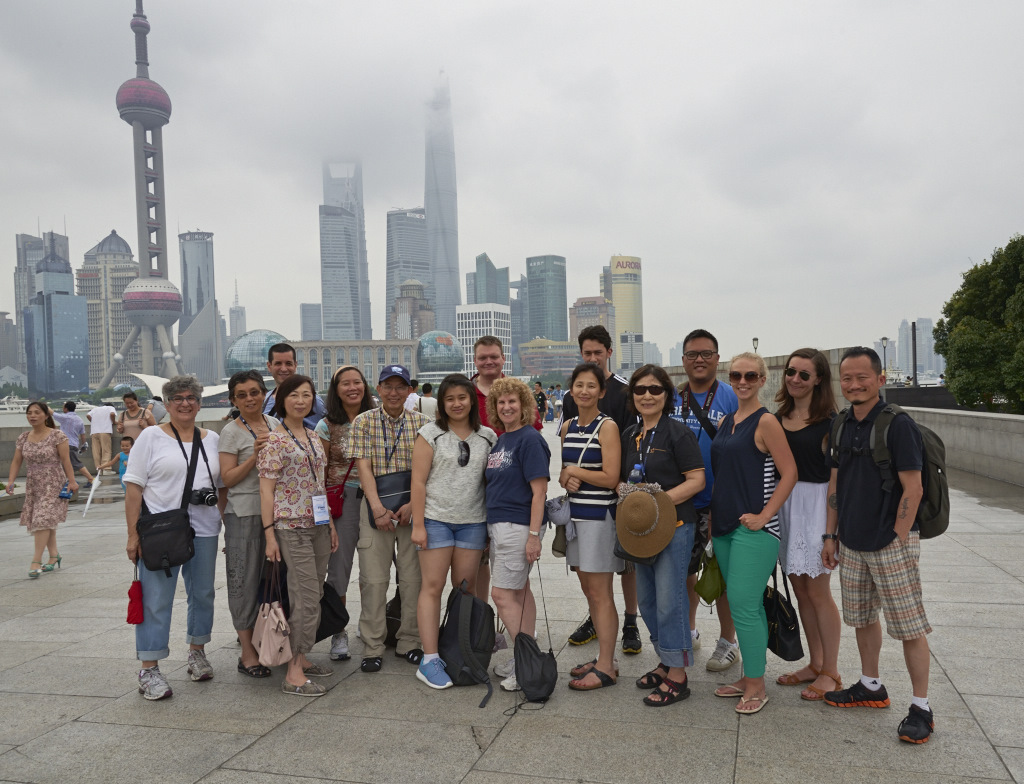
2014 ALPHA Study Tour group on the Shanghai Bund
(photo by Louis Au)
Toronto ALPHA organizes the study tour to help high school teachers create curriculum material currently missing from classrooms. Although we did pause for photo-ops and many great Chinese and Korean meals, much of the tour was spent in study and reflection on serious topics, and once-in-a-lifetime meetings with survivors of the war.
Shanghai was our first stop and a good preparation for what was to come, shattering many pre-conceived notions that I had about China and mainland Chinese people. First of all, I was not interrogated by immigration or strip searched by customs officials or “shanghai’ed” by the taxi driver. In fact, as the taxi took me to our hotel from the Pudong Airport late Friday night, Shanghai seemed disappointingly western. The miles of tall apartment buildings leading into the central part of the city reminded me of the suburbs surrounding NYC. The billboards advertised western luxury brand goods and featured Hollywood movie stars like George Clooney. As soon as we neared the center of the city we also hit NYC-style traffic.
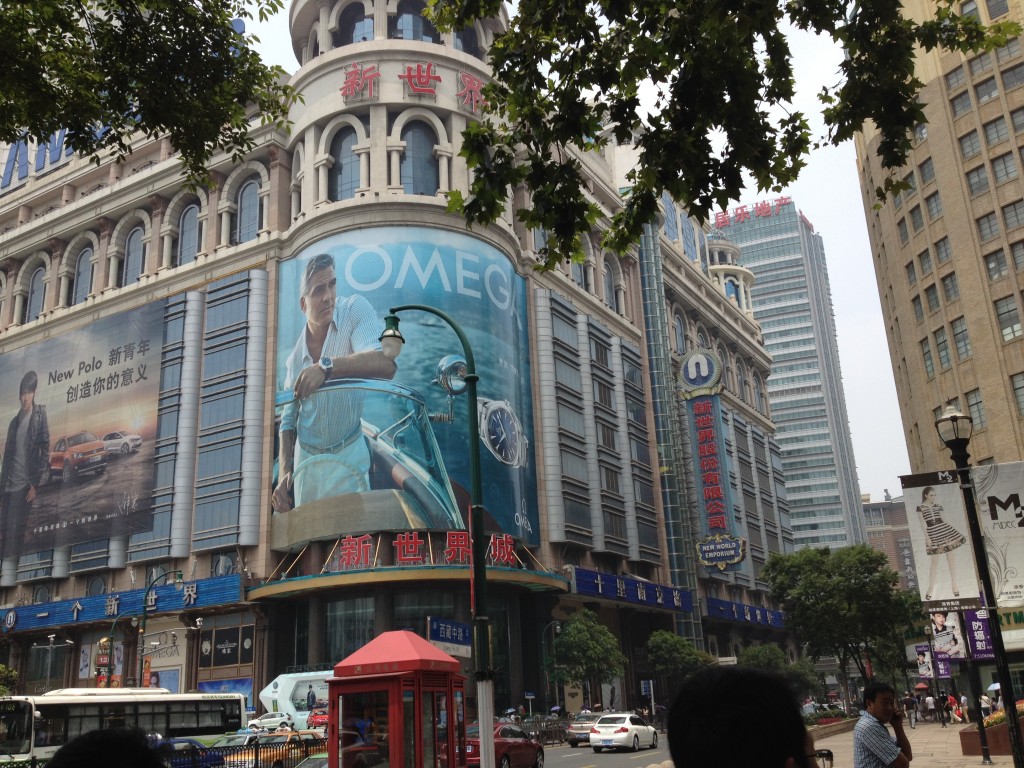
Shanghai is a vibrant mixture of old and new, east and west
Since I’m a lazy blogger with a poor memory, I refer you to fellow traveler Don Tow’s excellent wrap-up of our trip and my roommate Debra Maller’s day by day blog to get a better idea of all the sites we visited and people we spoke to.
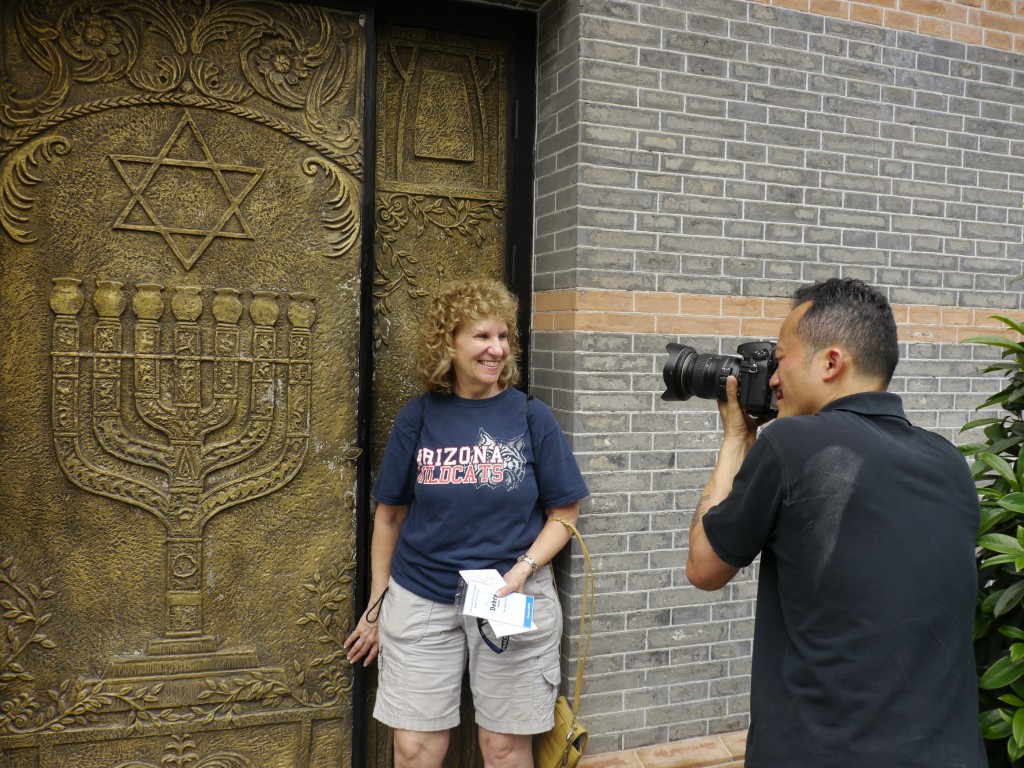
My study tour roommate Debra Maller with our tour documenter Louis Au outside the Shanghai Jewish Refugee museum. Proud that the Chinese took in Jews during WWII when other countries turned them away.
For me, learning of the abuses of women during the war was particularly emotional. The reality of the situation hit home for me when we visited a former “comfort station” in Shanghai, the former residence of the Chen’s, a wealthy family who fled Shanghai when the Japanese military invaded the city in 1937.
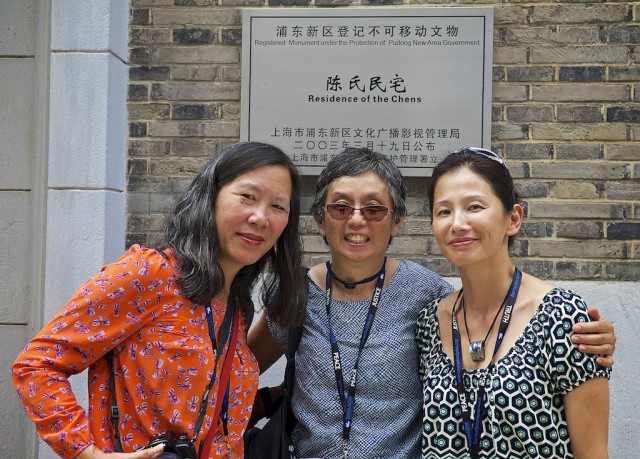
Outside Shanghai “comfort woman” house with Betty Ma and tour organizer Judy Cho (photo by Louis Au)
The Japanese military took over the house to use as a brothel for their troops and forced women that they kidnapped to live there and provide sex to the men. About 40 women were kept in the house during the war. It was a powerful emotional experience to be in the actual location where these women were imprisoned and abused. The place felt haunted. I could sense the helplessness of the women who were forced to service the men and the despair they must have lived with.

Courtyard of Shanghai “comfort women” house
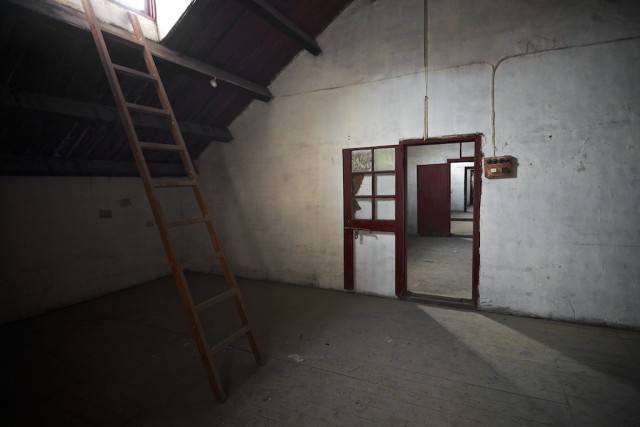
Second floor room of Shanghai “comfort women” house (photo by Louis Au)
The fact is that sexual slavery and the abuse of women still goes on all over the world. How can we stop it? On the last leg of our trip I was heartened to meet the Korean grandmas in Seoul, surviving “comfort women” who had become activists to help other women suffering sexual abuse. Their ability to survive to find enjoyment and purpose in life made me realize that humanity is also capable of great good. Their activism and commitment to sharing very painful personal stories so others might not have to suffer was deeply inspirational.
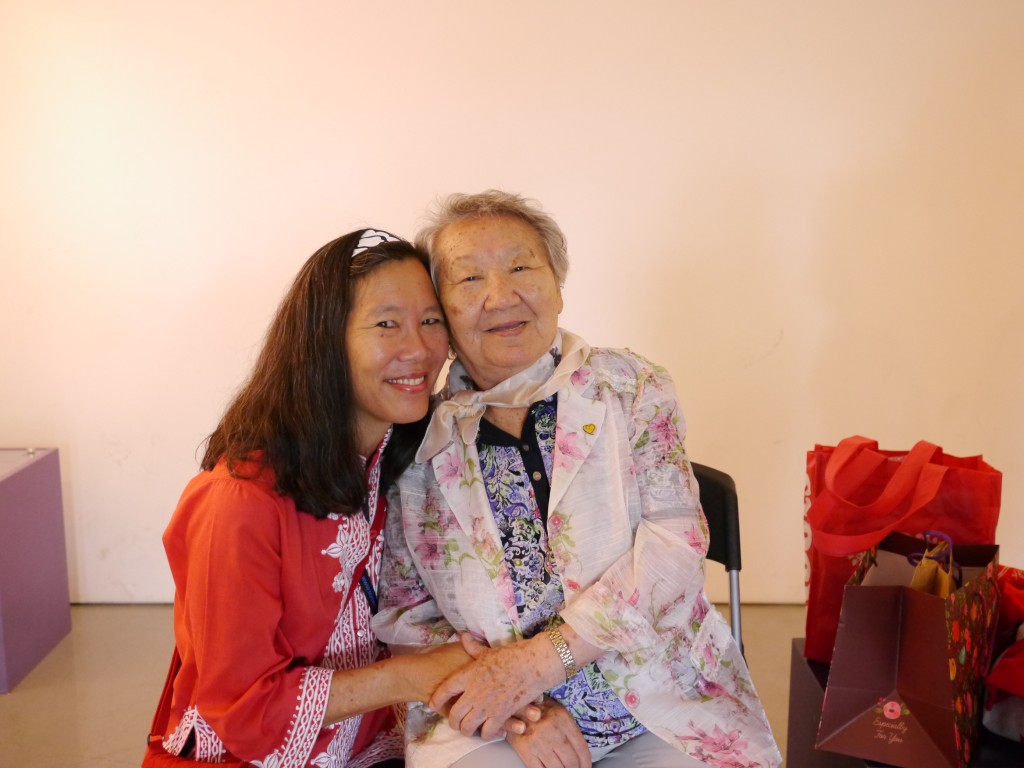
Grandma Gil, one of the Korean “comfort women” we met at the War and Women’s Human Rights Museum in Seoul
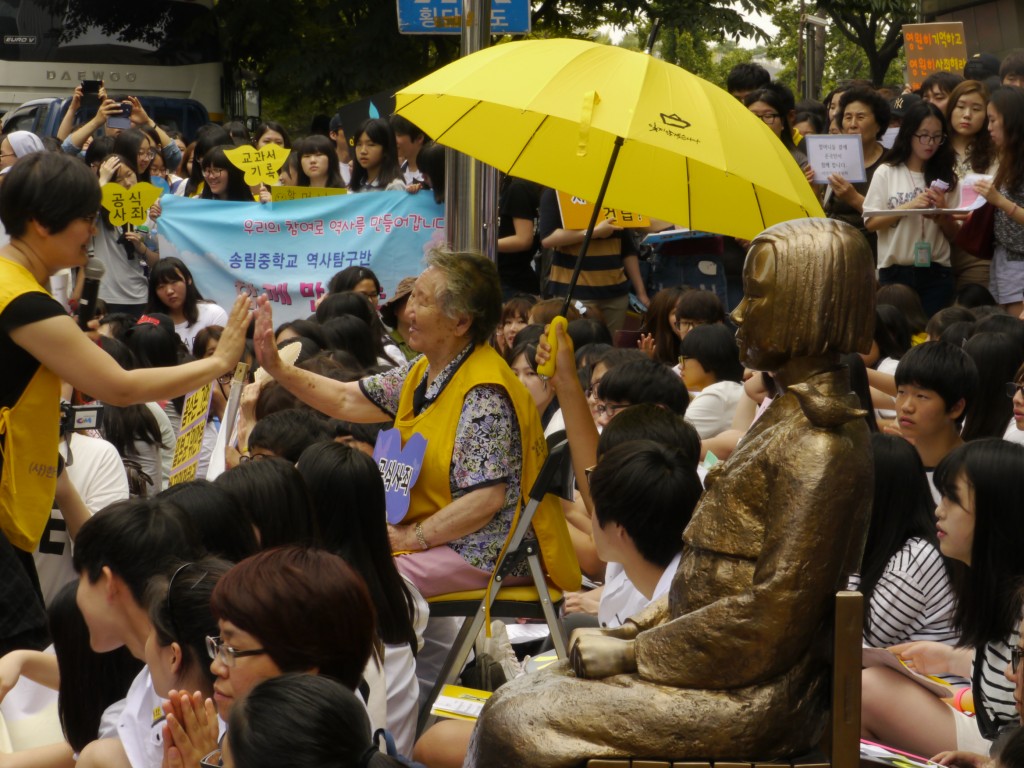
86 year old Grandma Gil continues to advocate for women in weekly demonstrations in Seoul. She was forced into sexual slavery at 13 years old.
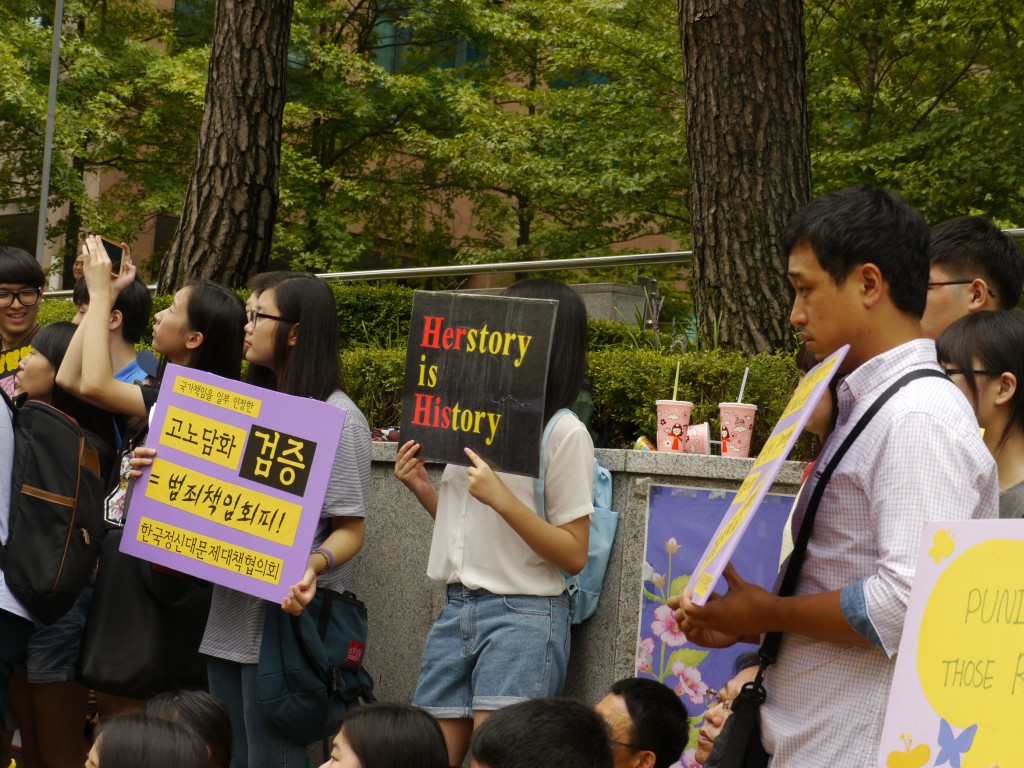
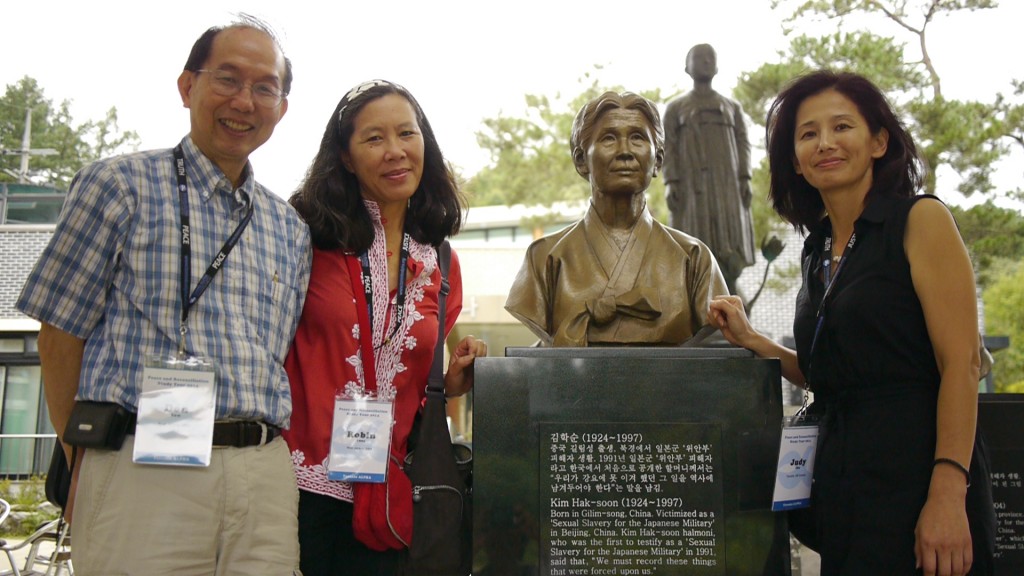
Don Tow, Robin Lung, and Judy Cho at memorial to Kim Hak-Soon, the first woman to publicly testify to being a sexual slave to the Japanese military during World War II
Many of the World War II atrocities we learned about on the tour are compilations of personal histories that have almost been lost and are only now being able to be told due to the diligent work of individual scholars or brave individuals who have gone public with their stories despite the public shame or government disapproval that has come with it. As our learning sessions continued, I began to see that every country and every generation within each country has a different way of remembering history and using history to forge a path to the future. There are also forces in every country that cause large chunks of history to be suppressed or forgotten. America is no exception. How much of our own history has been lost or forgotten? And why?
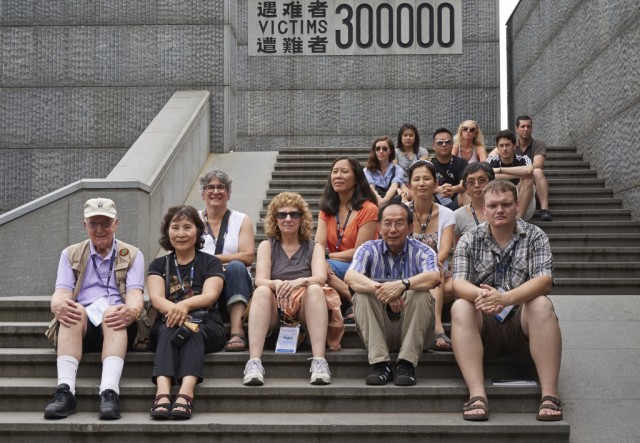
Our group after touring the Nanjing Massacre Memorial Hall

The Nanjing Massacre Memorial Hall is built near the site of a mass grave of 10,000 victims and displays some of the remains excavated near the site. A gruesome reminder of the horrors of war.
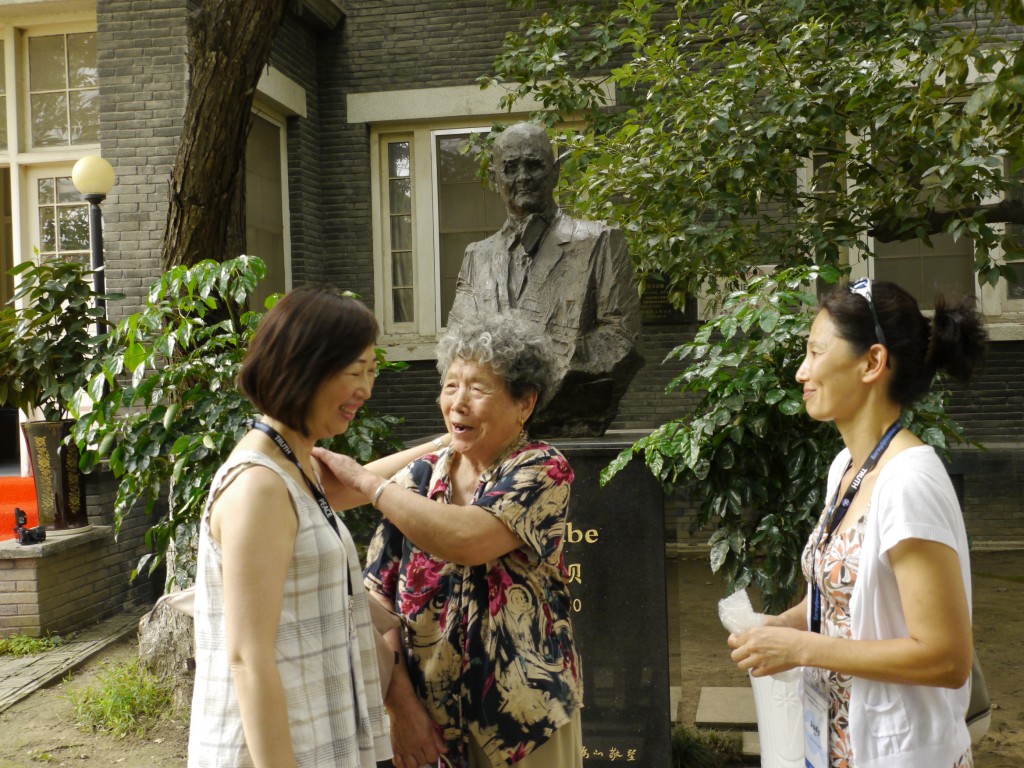
At the John Rabe House study tour leader FLora Chong and Judy Cho greet Nanjing Massacre survivor Ding Zheng Lan who was sheltered in the Safety Zone created by Rabe and several other westerners who remained in Nanjing during the massacre in 1937.
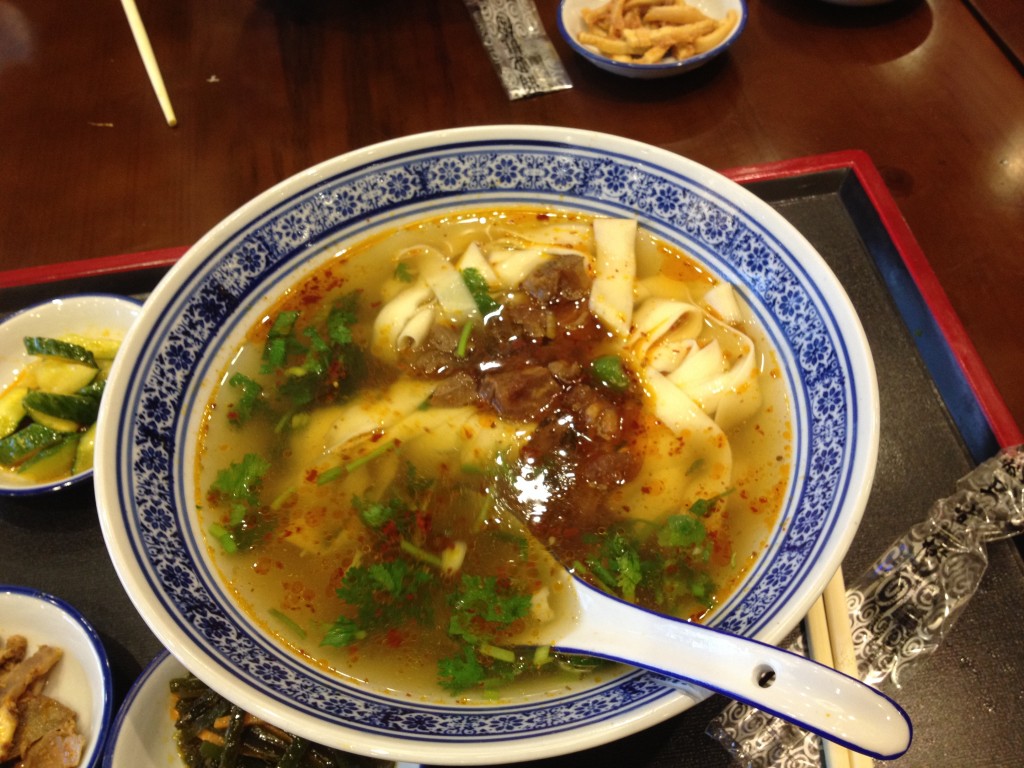
Nothing like restorative noodle soup after studying about wartime massacres. One of my favorite China meals was at the Nanjing airport.
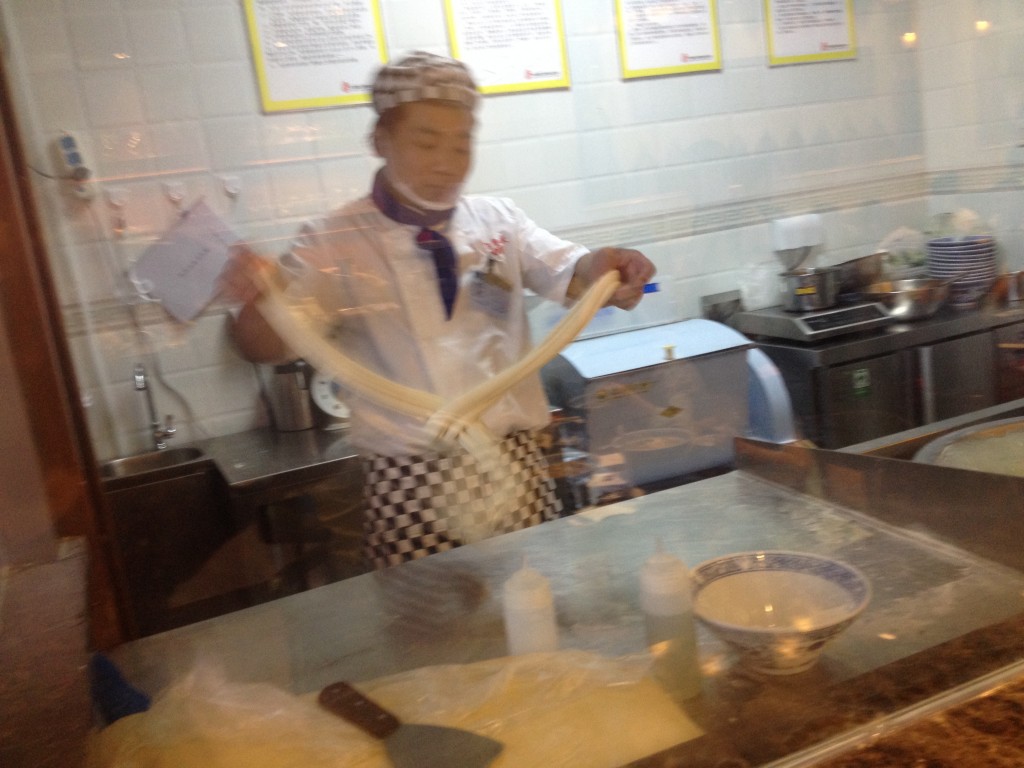
Why would you eat at the airport McDonalds when this is available?
The highlight of my trip came after the official study tour was over and I traveled to Chongqing, the wartime capital of China where much of KUKAN was filmed. I was able to stand at the very place that Rey Scott filmed scenes of the bombing of Chongqing that made KUKAN famous.
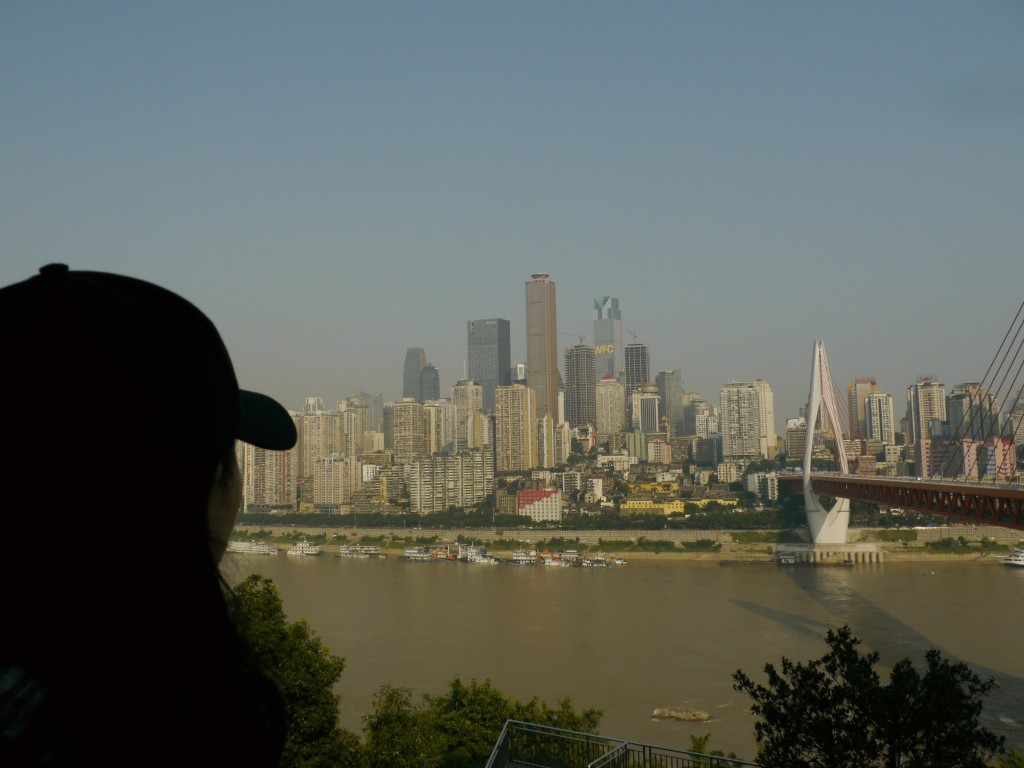
View of Chongqing from the south bank of the Yangtze
I also screened KUKAN for a group of about 30 historians in Chongqing.They were clearly moved by the scenes of their city being decimated by the Japanese bombs. They had never heard of KUKAN before even though many of them had spent their academic careers studying the war. The film represented the most complete record of the bombing of Chongqing that they had ever seen and contained a treasure trove of images from all the locations in China where Rey Scott filmed.They applauded Li Ling-Ai and Rey Scott’s heroic effort in making the film and my effort to bring it to their attention. As a struggling filmmaker, knowing that a piece of work can have an impact beyond one’s lifetime helps keep me motivated when the chips are down. I hope to have more news about a return trip to China soon.
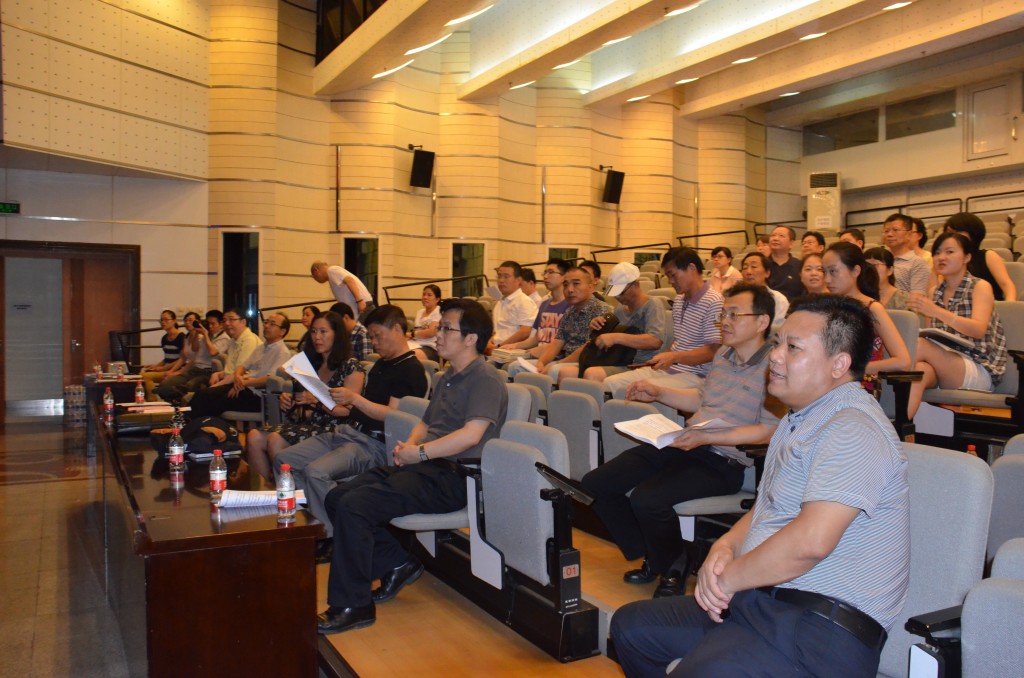
Scholars in Chongqing view the 1941 KUKAN — screened in China for the first time.
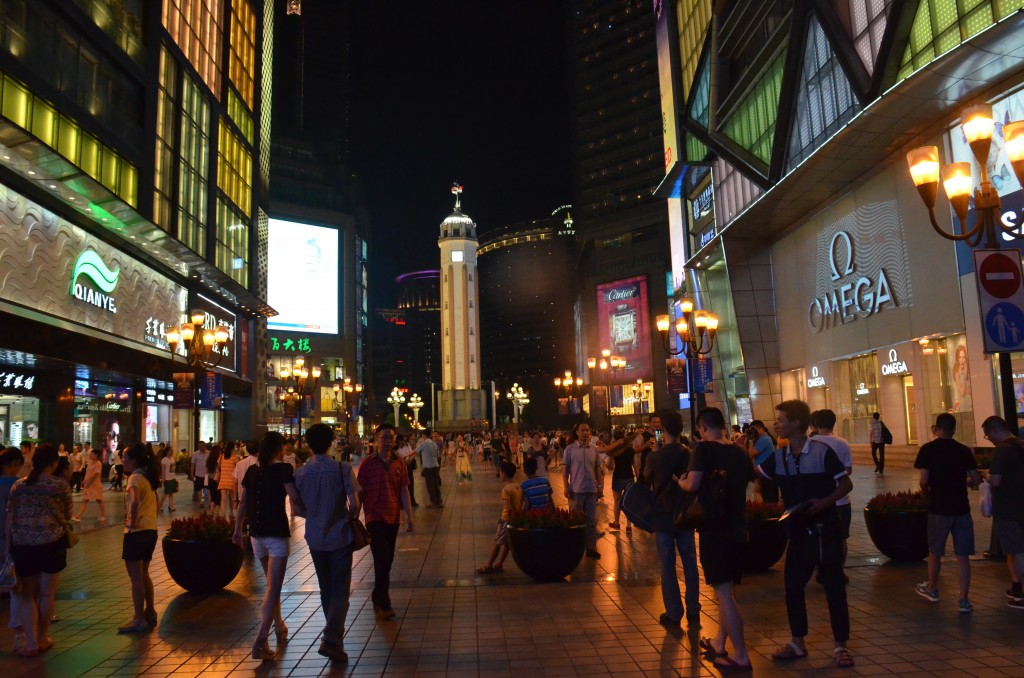
Chongqing’s central shopping square is anchored by the People’s Liberation Monument, built in 1945 to commemorate the victory over the Japanese in WWII. It was renamed in 1950 to commemorate the Communist conquest of the area. Even monuments change to fit the popular mood of the times.

